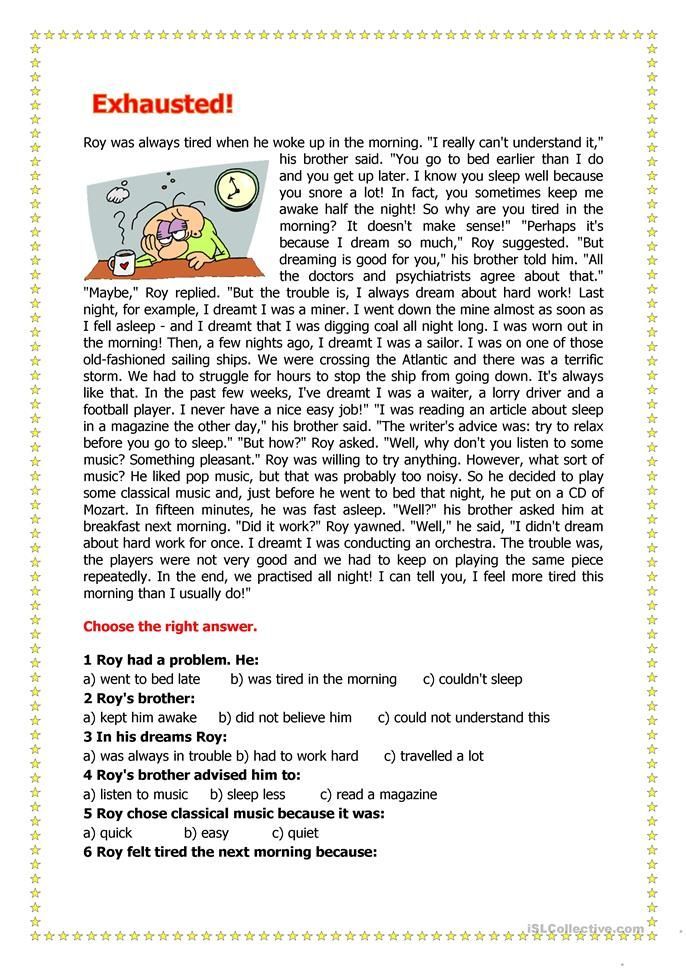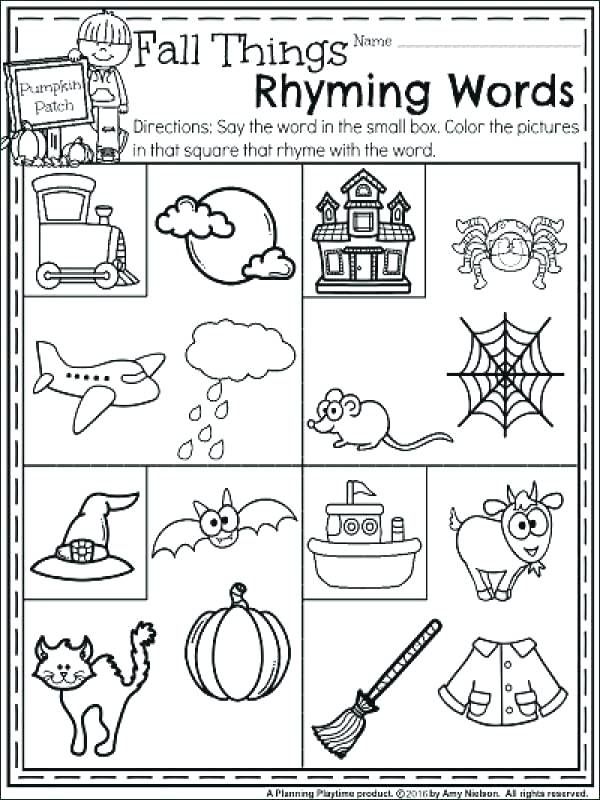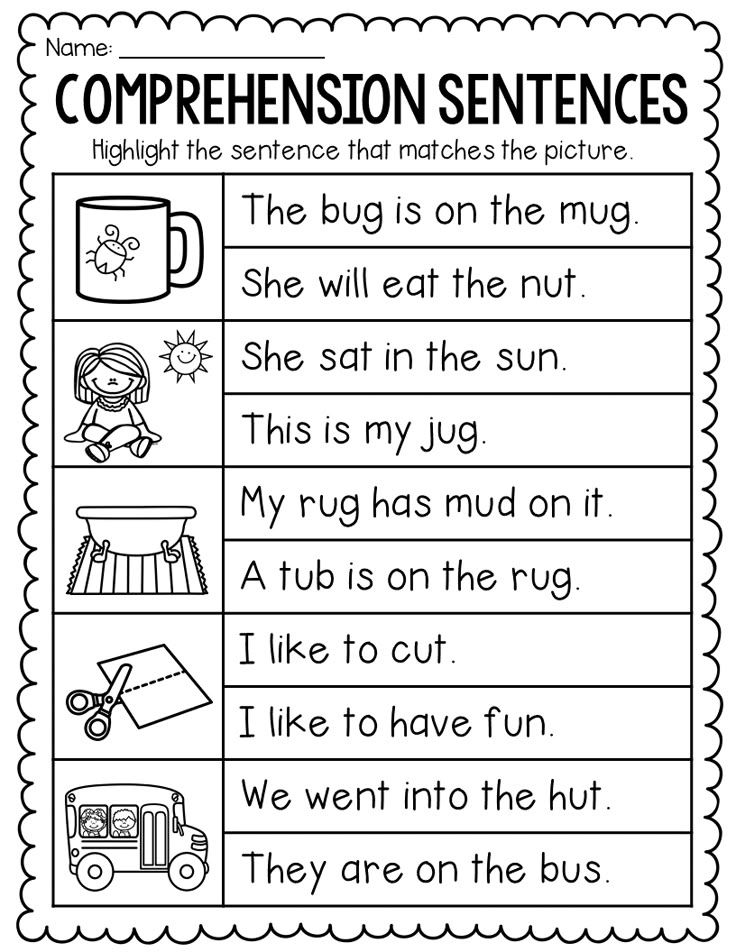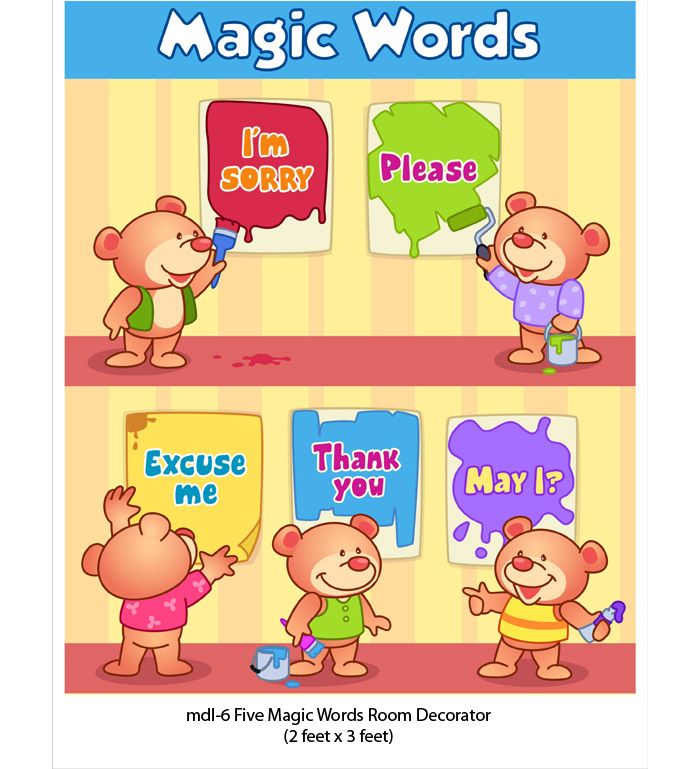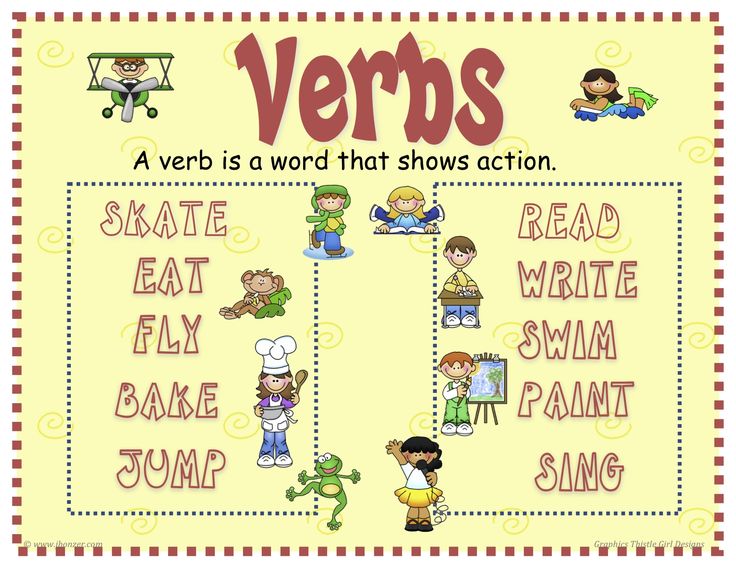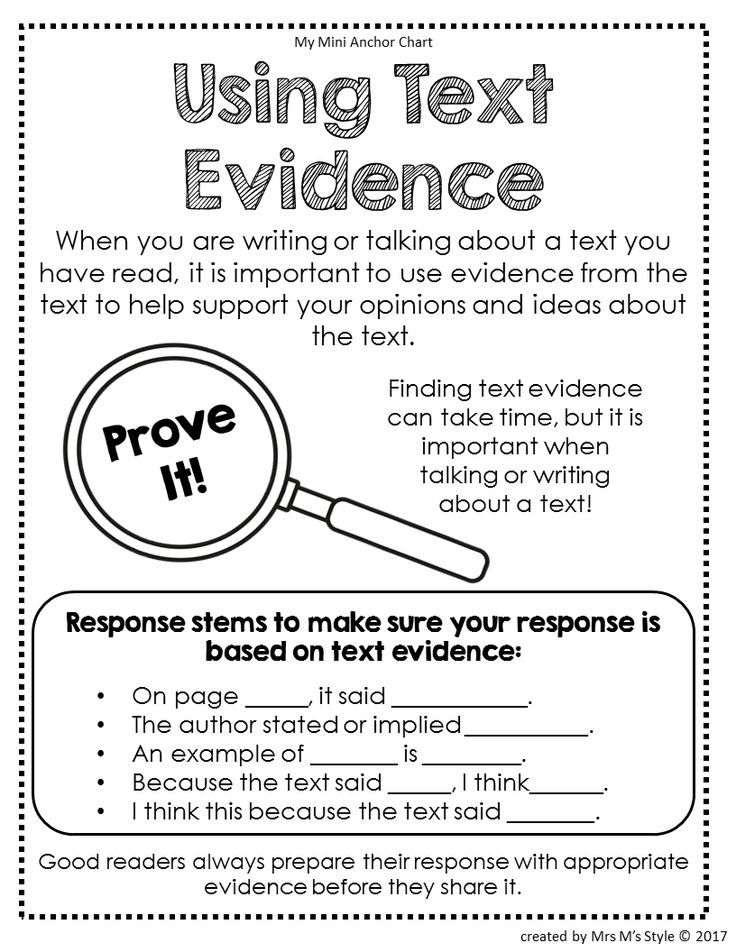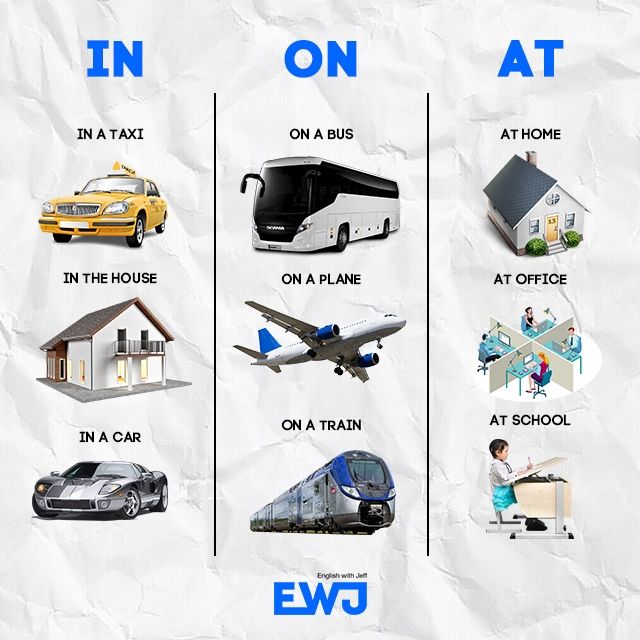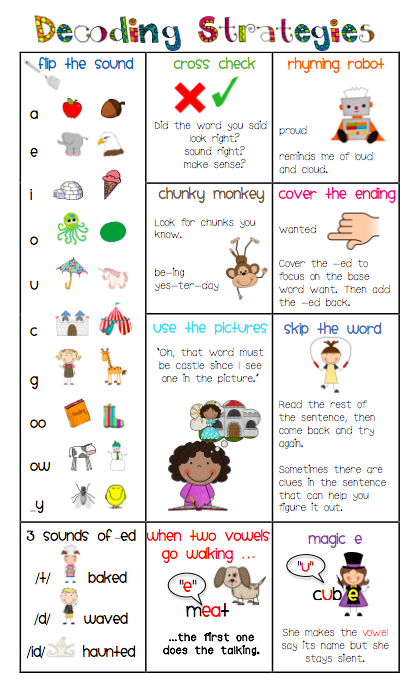Best reading comprehension strategies
Seven Strategies to Teach Students Text Comprehension
1. Monitoring comprehension
Students who are good at monitoring their comprehension know when they understand what they read and when they do not. They have strategies to "fix" problems in their understanding as the problems arise. Research shows that instruction, even in the early grades, can help students become better at monitoring their comprehension.
Comprehension monitoring instruction teaches students to:
- Be aware of what they do understand
- Identify what they do not understand
- Use appropriate strategies to resolve problems in comprehension
2. Metacognition
Metacognition can be defined as "thinking about thinking." Good readers use metacognitive strategies to think about and have control over their reading. Before reading, they might clarify their purpose for reading and preview the text. During reading, they might monitor their understanding, adjusting their reading speed to fit the difficulty of the text and "fixing" any comprehension problems they have.
After reading, they check their understanding of what they read.
Students may use several comprehension monitoring strategies:
- Identify where the difficulty occurs
"I don't understand the second paragraph on page 76."
- Identify what the difficulty is
"I don't get what the author means when she says, 'Arriving in America was a milestone in my grandmother's life.'"
- Restate the difficult sentence or passage in their own words
"Oh, so the author means that coming to America was a very important event in her grandmother's life."
- Look back through the text
"The author talked about Mr. McBride in Chapter 2, but I don't remember much about him. Maybe if I reread that chapter, I can figure out why he's acting this way now."
- Look forward in the text for information that might help them to resolve the difficulty
"The text says, 'The groundwater may form a stream or pond or create a wetland. People can also bring groundwater to the surface.
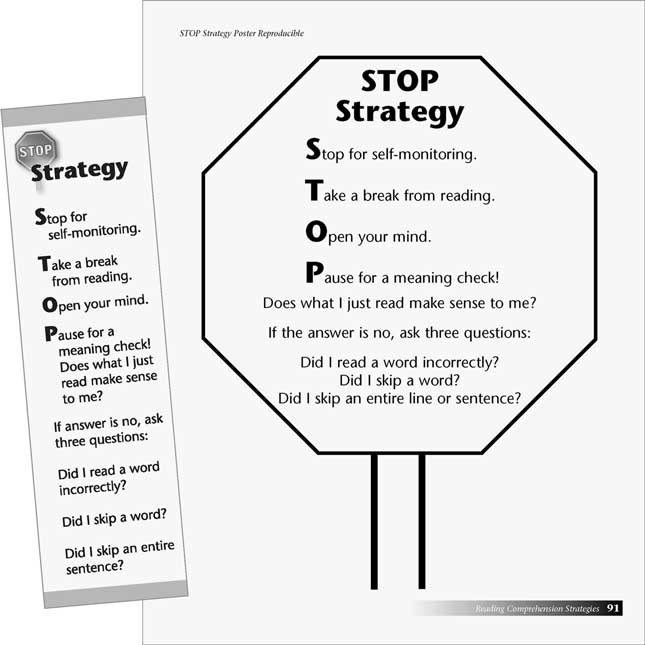 ' Hmm, I don't understand how people can do that… Oh, the next section is called 'Wells.' I'll read this section to see if it tells how they do it."
' Hmm, I don't understand how people can do that… Oh, the next section is called 'Wells.' I'll read this section to see if it tells how they do it."
3. Graphic and semantic organizers
Graphic organizers illustrate concepts and relationships between concepts in a text or using diagrams. Graphic organizers are known by different names, such as maps, webs, graphs, charts, frames, or clusters.
Regardless of the label, graphic organizers can help readers focus on concepts and how they are related to other concepts. Graphic organizers help students read and understand textbooks and picture books.
Graphic organizers can:
- Help students focus on text structure differences between fiction and nonfiction as they read
- Provide students with tools they can use to examine and show relationships in a text
- Help students write well-organized summaries of a text
Here are some examples of graphic organizers:
4. Answering questions
Questions can be effective because they:
- Give students a purpose for reading
- Focus students' attention on what they are to learn
- Help students to think actively as they read
- Encourage students to monitor their comprehension
- Help students to review content and relate what they have learned to what they already know
The Question-Answer Relationship strategy (QAR) encourages students to learn how to answer questions better.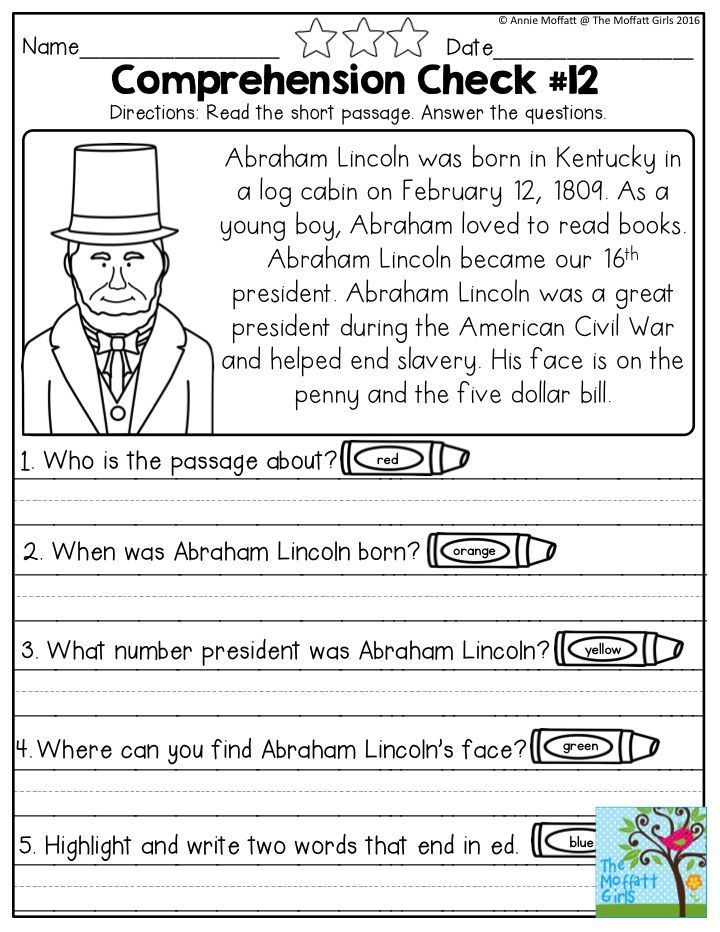 Students are asked to indicate whether the information they used to answer questions about the text was textually explicit information (information that was directly stated in the text), textually implicit information (information that was implied in the text), or information entirely from the student's own background knowledge.
Students are asked to indicate whether the information they used to answer questions about the text was textually explicit information (information that was directly stated in the text), textually implicit information (information that was implied in the text), or information entirely from the student's own background knowledge.
There are four different types of questions:
- "Right There"
Questions found right in the text that ask students to find the one right answer located in one place as a word or a sentence in the passage.
Example: Who is Frog's friend? Answer: Toad
- "Think and Search"
Questions based on the recall of facts that can be found directly in the text. Answers are typically found in more than one place, thus requiring students to "think" and "search" through the passage to find the answer.
Example: Why was Frog sad? Answer: His friend was leaving.
- "Author and You"
Questions require students to use what they already know, with what they have learned from reading the text.
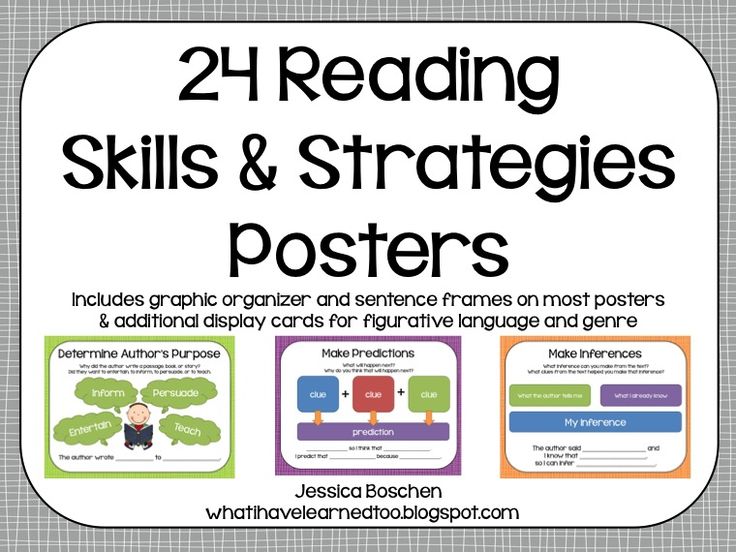 Students must understand the text and relate it to their prior knowledge before answering the question.
Students must understand the text and relate it to their prior knowledge before answering the question.Example: How do think Frog felt when he found Toad? Answer: I think that Frog felt happy because he had not seen Toad in a long time. I feel happy when I get to see my friend who lives far away.
- "On Your Own"
Questions are answered based on a student's prior knowledge and experiences. Reading the text may not be helpful to them when answering this type of question.
Example: How would you feel if your best friend moved away? Answer: I would feel very sad if my best friend moved away because I would miss her.
5. Generating questions
By generating questions, students become aware of whether they can answer the questions and if they understand what they are reading. Students learn to ask themselves questions that require them to combine information from different segments of text. For example, students can be taught to ask main idea questions that relate to important information in a text.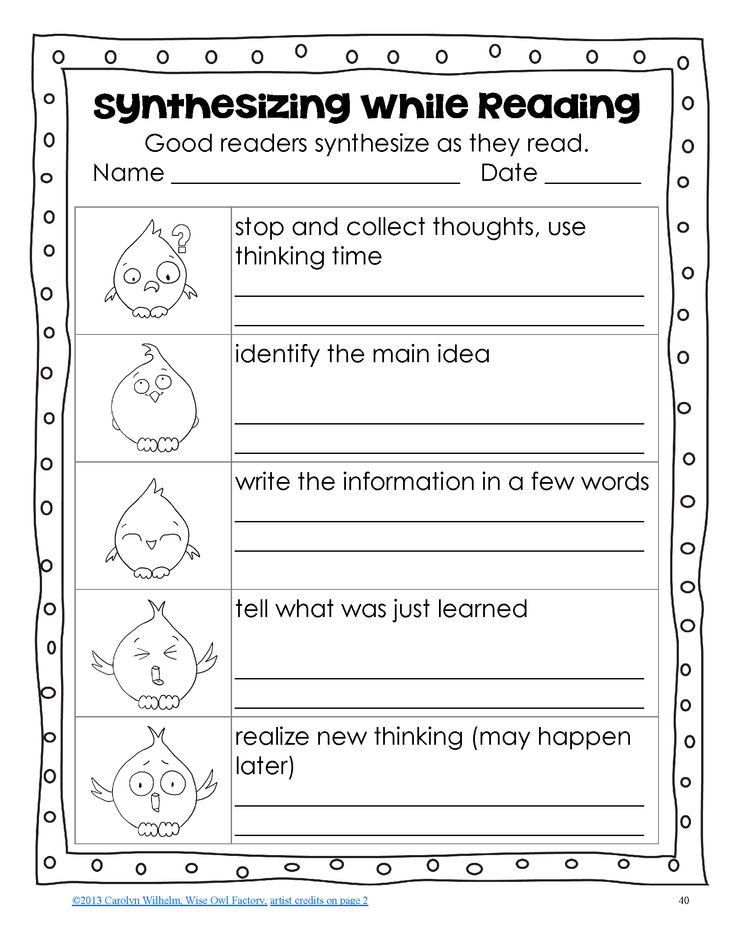
6. Recognizing story structure
In story structure instruction, students learn to identify the categories of content (characters, setting, events, problem, resolution). Often, students learn to recognize story structure through the use of story maps. Instruction in story structure improves students' comprehension.
7. Summarizing
Summarizing requires students to determine what is important in what they are reading and to put it into their own words. Instruction in summarizing helps students:
- Identify or generate main ideas
- Connect the main or central ideas
- Eliminate unnecessary information
- Remember what they read
Effective comprehension strategy instruction is explicit
Research shows that explicit teaching techniques are particularly effective for comprehension strategy instruction. In explicit instruction, teachers tell readers why and when they should use strategies, what strategies to use, and how to apply them.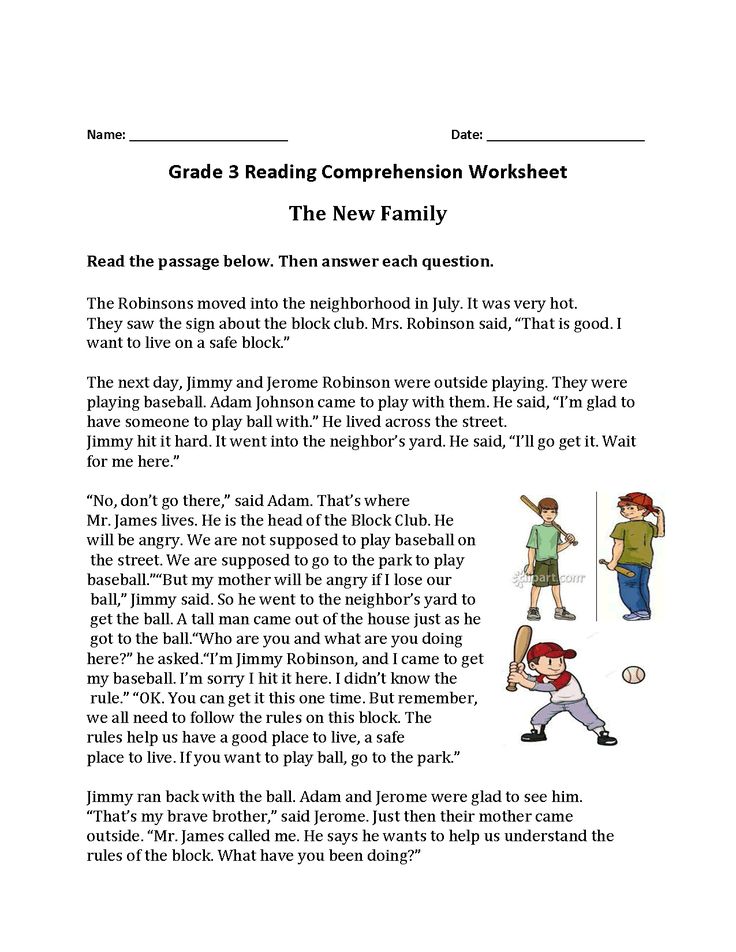 The steps of explicit instruction typically include direct explanation, teacher modeling ("thinking aloud"), guided practice, and application.
The steps of explicit instruction typically include direct explanation, teacher modeling ("thinking aloud"), guided practice, and application.
- Direct explanation
The teacher explains to students why the strategy helps comprehension and when to apply the strategy.
- Modeling
The teacher models, or demonstrates, how to apply the strategy, usually by "thinking aloud" while reading the text that the students are using.
- Guided practice
The teacher guides and assists students as they learn how and when to apply the strategy.
- Application
The teacher helps students practice the strategy until they can apply it independently.
Effective comprehension strategy instruction can be accomplished through cooperative learning, which involves students working together as partners or in small groups on clearly defined tasks. Cooperative learning instruction has been used successfully to teach comprehension strategies.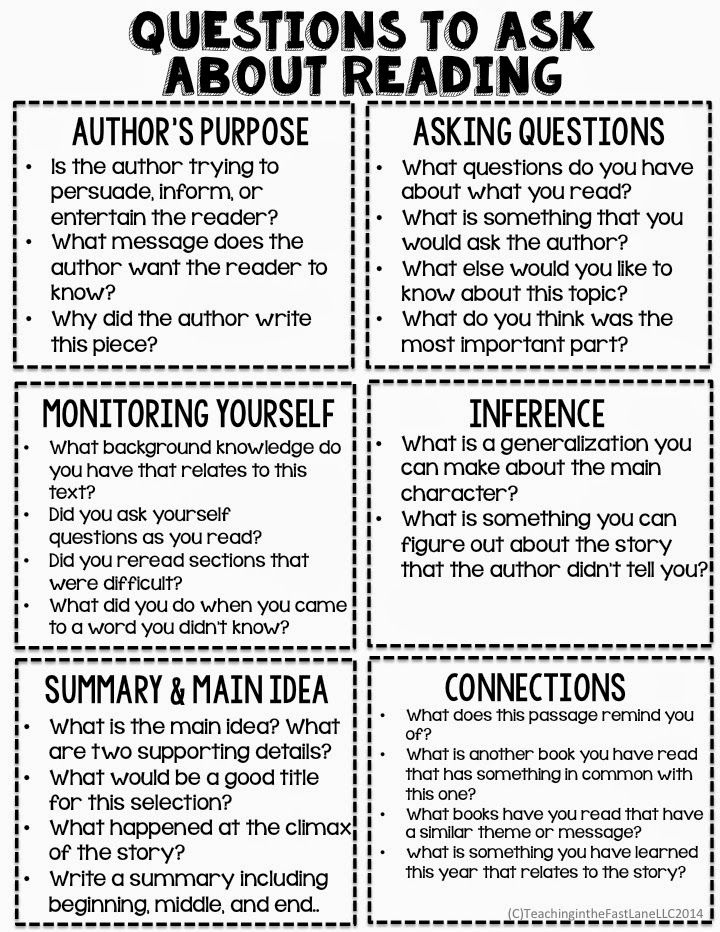 Students work together to understand texts, helping each other learn and apply comprehension strategies. Teachers help students learn to work in groups. Teachers also provide modeling of the comprehension strategies.
Students work together to understand texts, helping each other learn and apply comprehension strategies. Teachers help students learn to work in groups. Teachers also provide modeling of the comprehension strategies.
Strategies for Reading Comprehension :: Read Naturally, Inc.
Comprehension: The Goal of Reading
Comprehension, or extracting meaning from what you read, is the ultimate goal of reading. Experienced readers take this for granted and may not appreciate the reading comprehension skills required. The process of comprehension is both interactive and strategic. Rather than passively reading text, readers must analyze it, internalize it and make it their own.
In order to read with comprehension, developing readers must be able to read with some proficiency and then receive explicit instruction in reading comprehension strategies (Tierney, 1982).
Strategies for reading comprehension in Read Naturally programs
General Strategies for Reading Comprehension
The process of comprehending text begins before children can read, when someone reads a picture book to them.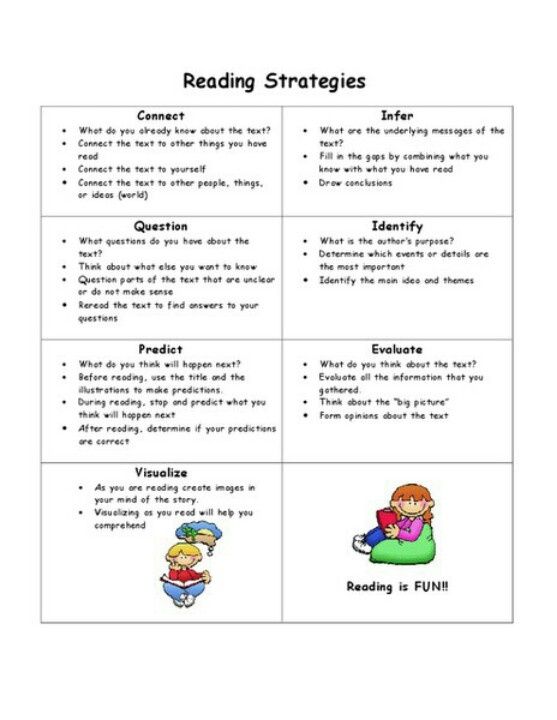 They listen to the words, see the pictures in the book, and may start to associate the words on the page with the words they are hearing and the ideas they represent.
They listen to the words, see the pictures in the book, and may start to associate the words on the page with the words they are hearing and the ideas they represent.
In order to learn comprehension strategies, students need modeling, practice, and feedback. The key comprehension strategies are described below.
Using Prior Knowledge/Previewing
When students preview text, they tap into what they already know that will help them to understand the text they are about to read. This provides a framework for any new information they read.
Predicting
When students make predictions about the text they are about to read, it sets up expectations based on their prior knowledge about similar topics. As they read, they may mentally revise their prediction as they gain more information.
Identifying the Main Idea and Summarization
Identifying the main idea and summarizing requires that students determine what is important and then put it in their own words.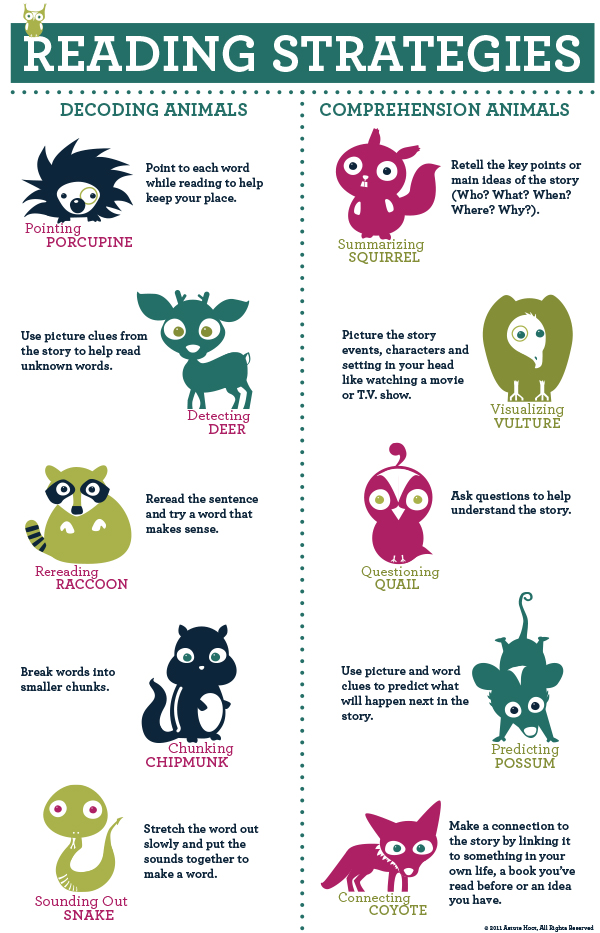 Implicit in this process is trying to understand the author’s purpose in writing the text.
Implicit in this process is trying to understand the author’s purpose in writing the text.
Questioning
Asking and answering questions about text is another strategy that helps students focus on the meaning of text. Teachers can help by modeling both the process of asking good questions and strategies for finding the answers in the text.
Making Inferences
In order to make inferences about something that is not explicitly stated in the text, students must learn to draw on prior knowledge and recognize clues in the text itself.
Visualizing
Studies have shown that students who visualize while reading have better recall than those who do not (Pressley, 1977). Readers can take advantage of illustrations that are embedded in the text or create their own mental images or drawings when reading text without illustrations.
Strategies for Reading Comprehension: Narrative Text
Narrative text tells a story, either a true story or a fictional story.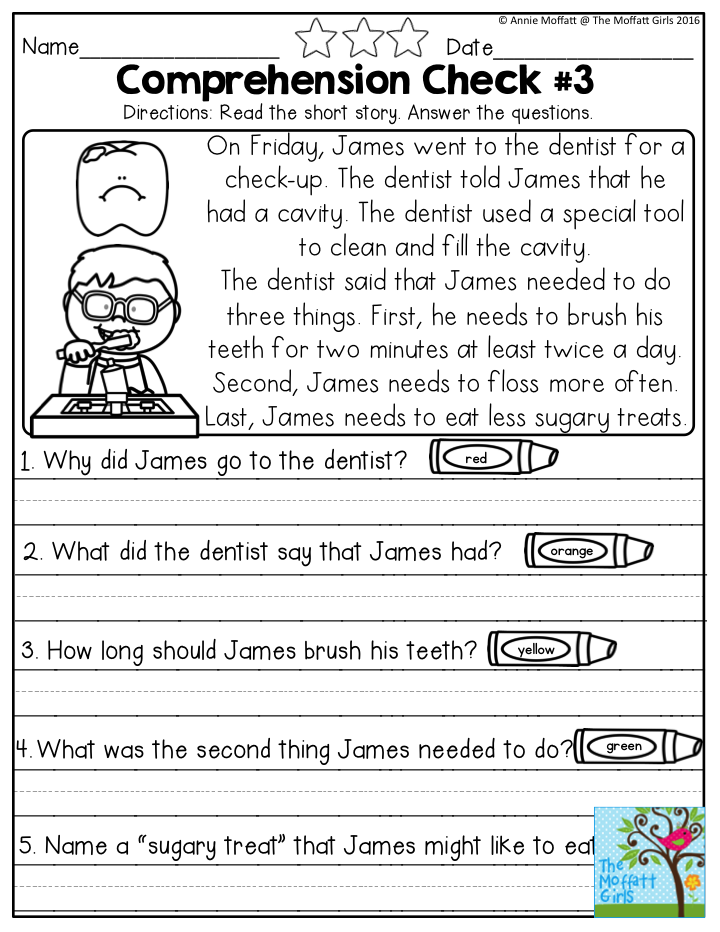 There are a number of strategies that will help students understand narrative text.
There are a number of strategies that will help students understand narrative text.
Story Maps
Teachers can have students diagram the story grammar of the text to raise their awareness of the elements the author uses to construct the story. Story grammar includes:
- Setting: When and where the story takes place (which can change over the course of the story).
- Characters: The people or animals in the story, including the protagonist (main character), whose motivations and actions drive the story.
- Plot: The story line, which typically includes one or more problems or conflicts that the protagonist must address and ultimately resolve.
- Theme: The overriding lesson or main idea that the author wants readers to glean from the story. It could be explicitly stated as in Aesop’s Fables or inferred by the reader (more common).
Printable story map (blank)
Retelling
Asking students to retell a story in their own words forces them to analyze the content to determine what is important.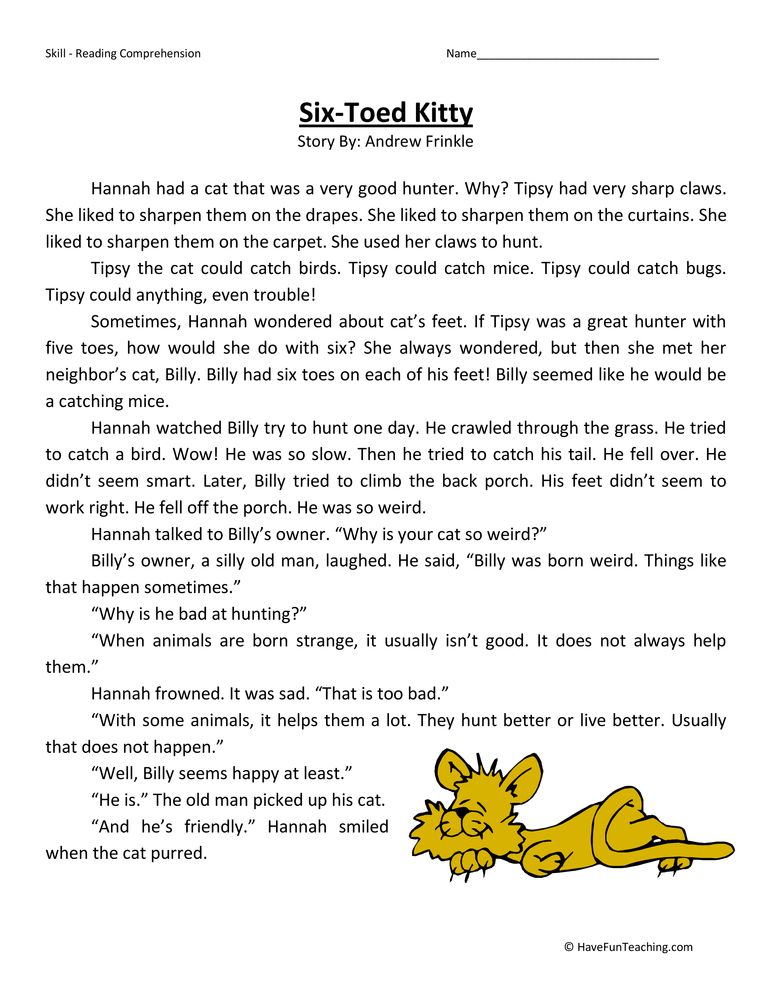 Teachers can encourage students to go beyond literally recounting the story to drawing their own conclusions about it.
Teachers can encourage students to go beyond literally recounting the story to drawing their own conclusions about it.
Prediction
Teachers can ask readers to make a prediction about a story based on the title and any other clues that are available, such as illustrations. Teachers can later ask students to find text that supports or contradicts their predictions.
Answering Comprehension Questions
Asking students different types of questions requires that they find the answers in different ways, for example, by finding literal answers in the text itself or by drawing on prior knowledge and then inferring answers based on clues in the text.
Strategies for Reading Comprehension: Expository Text
Expository text explains facts and concepts in order to inform, persuade, or explain.
The Structure of Expository Text
Expository text is typically structured with visual cues such as headings and subheadings that provide clear cues as to the structure of the information.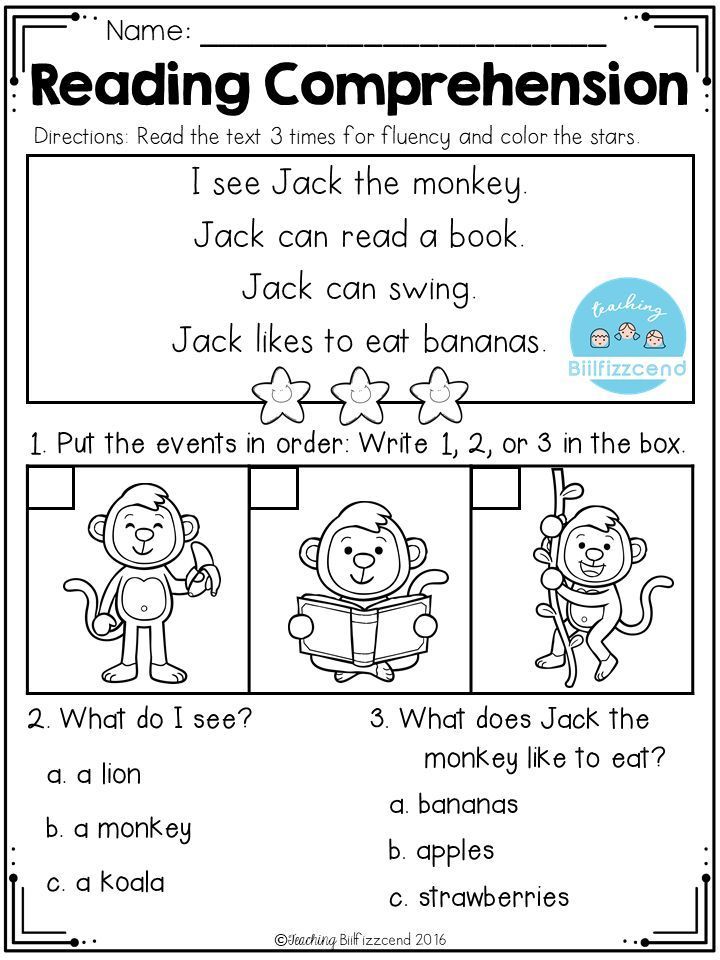 The first sentence in a paragraph is also typically a topic sentence that clearly states what the paragraph is about.
The first sentence in a paragraph is also typically a topic sentence that clearly states what the paragraph is about.
Expository text also often uses one of five common text structures as an organizing principle:
- Cause and effect
- Problem and solution
- Compare and contrast
- Description
- Time order (sequence of events, actions, or steps)
Teaching these structures can help students recognize relationships between ideas and the overall intent of the text.
Main Idea/Summarization
A summary briefly captures the main idea of the text and the key details that support the main idea. Students must understand the text in order to write a good summary that is more than a repetition of the text itself.
K-W-L
There are three steps in the K-W-L process (Ogle, 1986):
- What I Know: Before students read the text, ask them as a group to identify what they already know about the topic. Students write this list in the “K” column of their K-W-L forms.
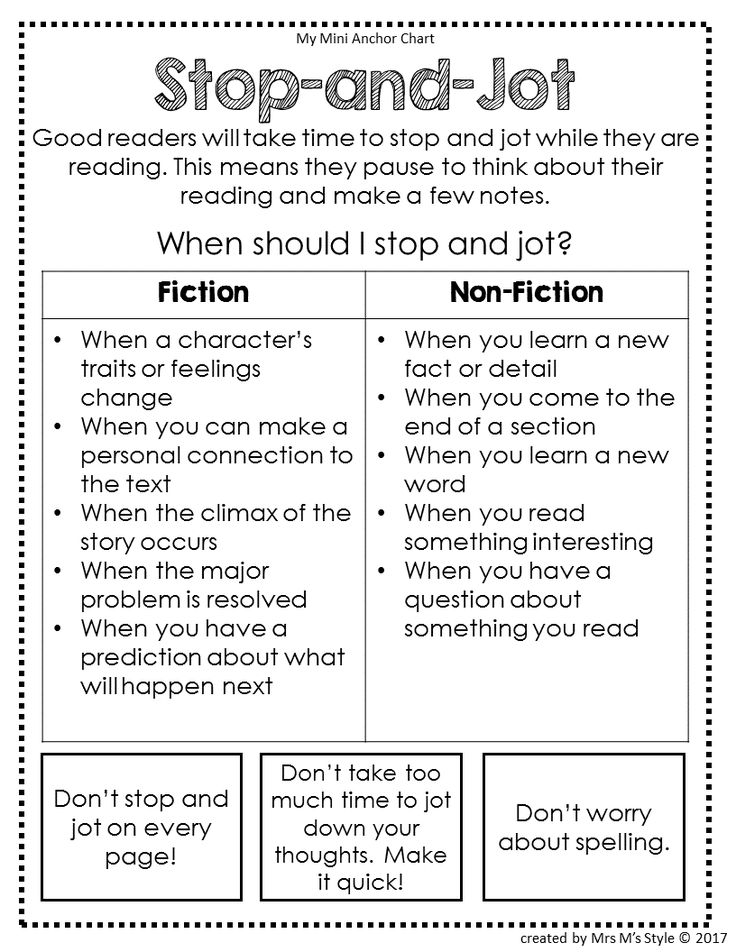
- What I Want to Know: Ask students to write questions about what they want to learn from reading the text in the “W” column of their K-W-L forms. For example, students may wonder if some of the “facts” offered in the “K” column are true.
- What I Learned: As they read the text, students should look for answers to the questions listed in the “W” column and write their answers in the “L” column along with anything else they learn.
After all of the students have read the text, the teacher leads a discussion of the questions and answers.
Printable K-W-L chart (blank)
Graphic Organizers
Graphic organizers provide visual representations of the concepts in expository text. Representing ideas and relationships graphically can help students understand and remember them. Examples of graphic organizers are:
Tree diagrams that represent categories and hierarchies
Tables that compare and contrast data
Time-driven diagrams that represent the order of events
Flowcharts that represent the steps of a process
Teaching students how to develop and construct graphic organizers will require some modeling, guidance, and feedback.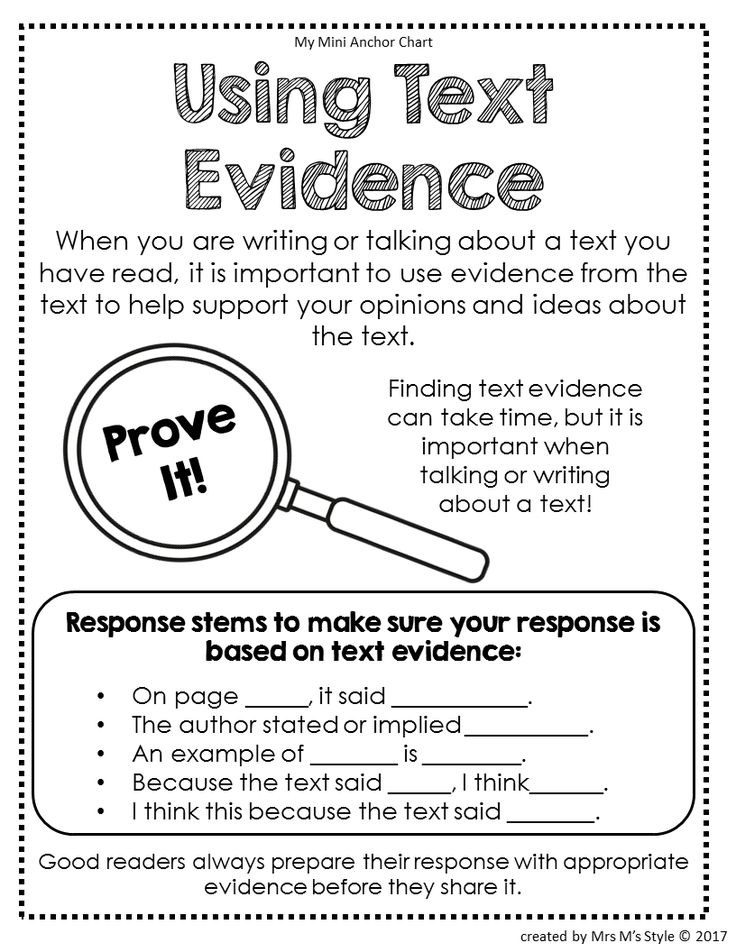 Teachers should demonstrate the process with examples first before students practice doing it on their own with teacher guidance and eventually work independently.
Teachers should demonstrate the process with examples first before students practice doing it on their own with teacher guidance and eventually work independently.
Strategies for Reading Comprehension in Read Naturally Programs
Several Read Naturally programs include strategies that support comprehension:
| Read Naturally Intervention Program | Strategies for Reading Comprehension | |||
|---|---|---|---|---|
| Prediction Step | Retelling Step | Quiz / Comprehension Questions | Graphic Organizers | |
| Read Naturally Live:
| ✔ | ✔ |
| |
| Read Naturally Encore:
| ✔ | ✔ |
| |
| Read Naturally GATE:
| ✔ | ✔ |
| |
| One Minute Reader Live:
|
| |||
| One Minute Reader Books/CDs:
|
| |||
| Take Aim at Vocabulary: A print-based program with audio CDs that teaches carefully selected target words and strategies for independently learning unknown words. Students work mostly independently or in teacher-led small groups of up to six students.
|
| ✔ | ||
Bibliography
Honig, B.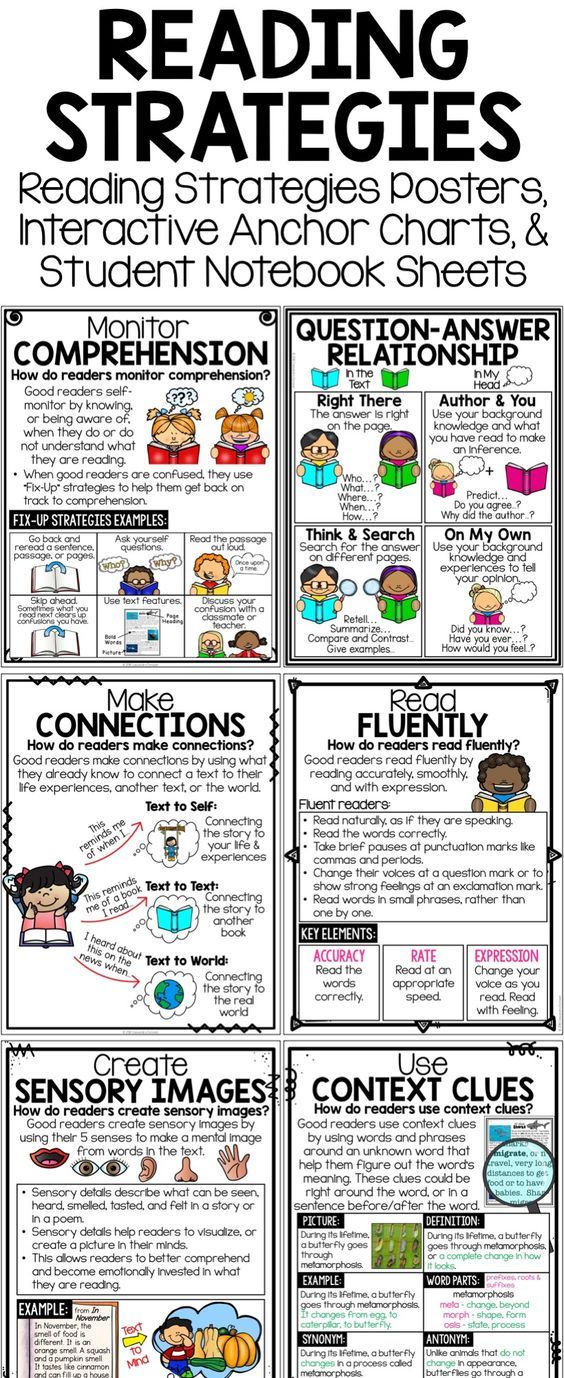 , L. Diamond, and L. Gutlohn. (2013). Teaching reading sourcebook, 2nd ed. Novato, CA: Arena Press.
, L. Diamond, and L. Gutlohn. (2013). Teaching reading sourcebook, 2nd ed. Novato, CA: Arena Press.
Ogle, D. M. (1986). K-W-L: A teaching model that develops active reading of expository text. The Reading Teacher 38(6), pp. 564–570.
Pressley, M. (1977). Imagery and children’s learning: Putting the picture in developmental perspective. Review of Educational Research 47, pp. 586–622.
Tierney, R. J. (1982). Essential considerations for developing basic reading comprehension skills. School Psychology Review 11(3), pp. 299–305.
7 Easy Ways to Improve Your Reading Comprehension • BUOM
June 9, 2021
Comprehension is an important aspect of reading. When you read, try to understand and extract the meaning for a better understanding of what you are reading. By learning and implementing reading strategies and changing the way you read, you can improve your reading comprehension and make reading easier and more enjoyable.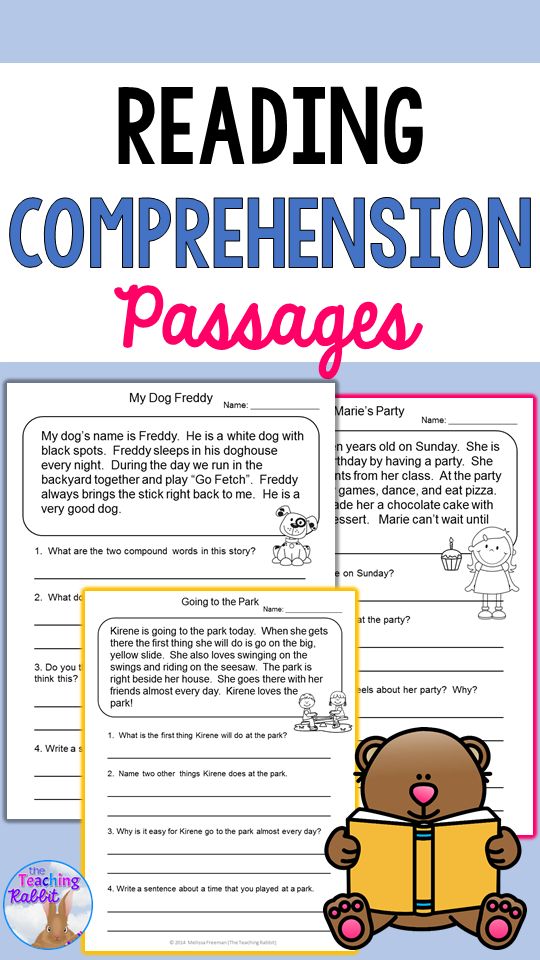
In this article, we look at what reading comprehension is and the best strategies you can use to improve your reading skills.
Programs for Windows, mobile applications, games - EVERYTHING is FREE, in our closed telegram channel - Subscribe :)
What is reading comprehension?
Reading comprehension is the ability to comprehend or understand what you are reading. This is the intentional and active part of reading that happens before, during, and after you read something. By being able to understand what you read, you can make sense of the text and better understand what the author is trying to convey.
There are two components of reading comprehension: text comprehension and vocabulary knowledge. Vocabulary knowledge is the ability to understand the language being used, while text comprehension uses that language to develop an understanding of the text's meaning.
Why is reading comprehension important?
Reading comprehension is important for several reasons and can provide many benefits.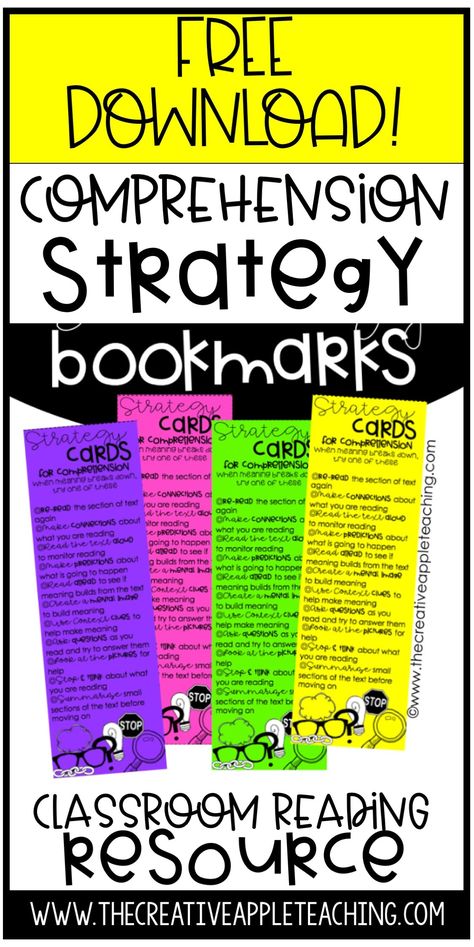 The ability to read effectively can improve both your personal and professional life and increase your overall reading enjoyment. Knowing how to understand text can help improve your knowledge in certain areas and help you pick up new skills and information more quickly.
The ability to read effectively can improve both your personal and professional life and increase your overall reading enjoyment. Knowing how to understand text can help improve your knowledge in certain areas and help you pick up new skills and information more quickly.
Additional benefits of good reading comprehension skills include:
-
Ability to understand, analyze and respond to documents and written communication in the workplace
-
Improved your ability to write clearly and effectively
-
Ability to understand and participate in current events which are presented in written form, for example, in newspapers.
-
Increased ability to focus on reading for extended periods of time.
-
Better Reading Enjoyment and Motivation
Related: The Value of Expanding Your Business Vocabulary
7 Reading Strategies You Can Use to Improve Your Comprehension Skills today to improve your reading comprehension skills.
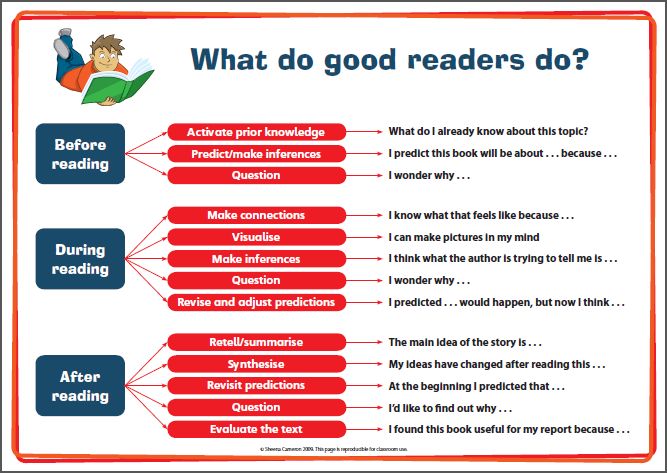 The more you practice, the better you will understand what you read. Below are seven simple strategies you can use to work on your comprehension skills:
The more you practice, the better you will understand what you read. Below are seven simple strategies you can use to work on your comprehension skills: -
Improve your vocabulary.
-
Make up questions about the text you are reading.
-
Use context clues.
-
Find the main idea.
-
Write a summary of what you read.
-
Break the reading into smaller parts.
-
Walk yourself.
Related: The Complete Guide to Strategic Planning
1. Improve your vocabulary
Knowing what the words you read means can improve your ability to understand the meaning of the text. To expand your vocabulary, you can:
-
Take the online vocabulary test to assess your current level of vocabulary understanding.
-
Use flashcards to test yourself for words you don't know once or twice a week.
-
Be sure to use the newly learned words in oral and written communication.
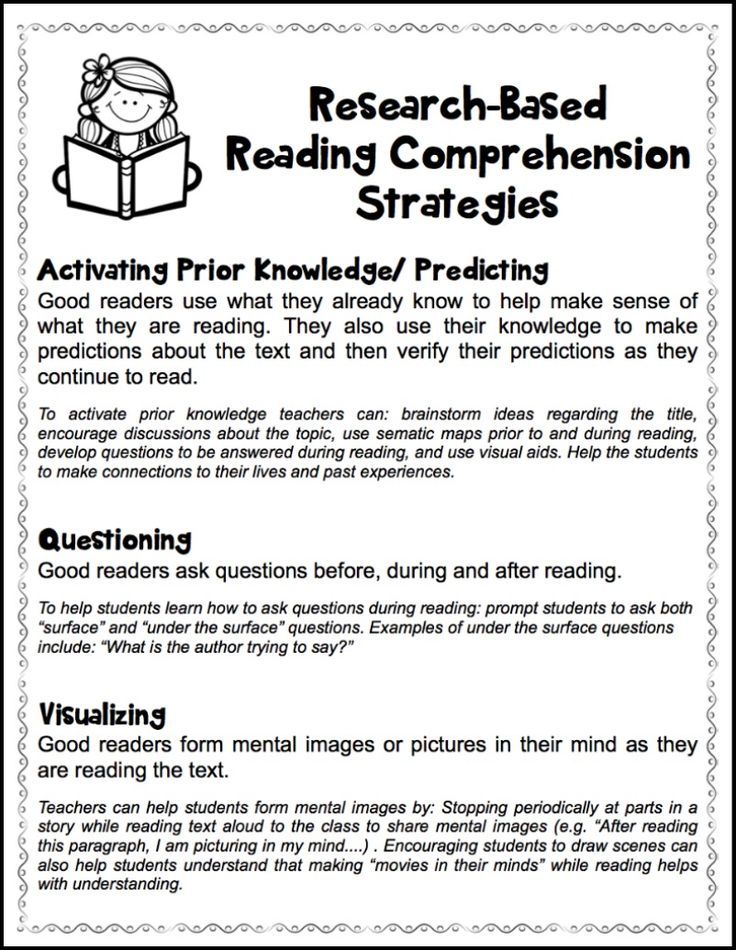
-
Read as much as you can to improve your ability to guess the meaning of a word in a particular context.
-
Make a list of unfamiliar words as you read and look them up in a dictionary.
Read more: 10 easy ways to improve your vocabulary
2. Make up questions about the text you are reading
By asking questions about what you are reading, you can improve your reading comprehension by allowing you to immerse yourself in the text. It can also expand your general understanding of what you are reading, allowing you to explore themes, motifs, and other components of the text that you might not otherwise know about. The following are examples of questions you could ask as you read:
-
Why did the author start the book from this point?
-
What is the relationship between these two characters?
-
What do we know about the main character up to this point in the book?
-
Are there any themes that keep popping up throughout the book? If yes, what do they mean?
The more specific your questions, the more likely you are to understand the text and its meaning.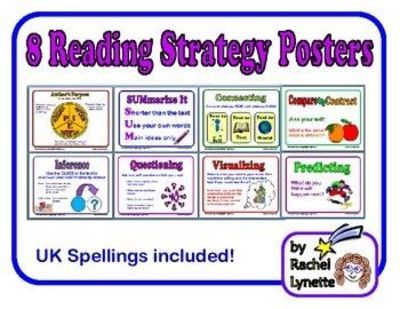
3. Use context prompts
Using context clues is a great way to understand what you're reading, even if you don't know all the vocabulary involved. Context clues can be found in the words and sentences surrounding a word you are unfamiliar with. To use context clues, you can focus on key phrases or ideas in a sentence and infer the main idea of a sentence or paragraph based on that information. You can also search for nearby words that are synonyms or antonyms for a word you don't know.
4. Look for the main idea
Determining the main idea of a paragraph or article can help you determine the importance of the article. Understanding why what you read is important will help you better understand what the author is trying to convey. When reading, pause every few paragraphs and see if you can decipher the main idea. Then try to state the main idea in your own words for even greater understanding.
5. Write a summary of what you read
A great way to expand your reading knowledge is to write a summary.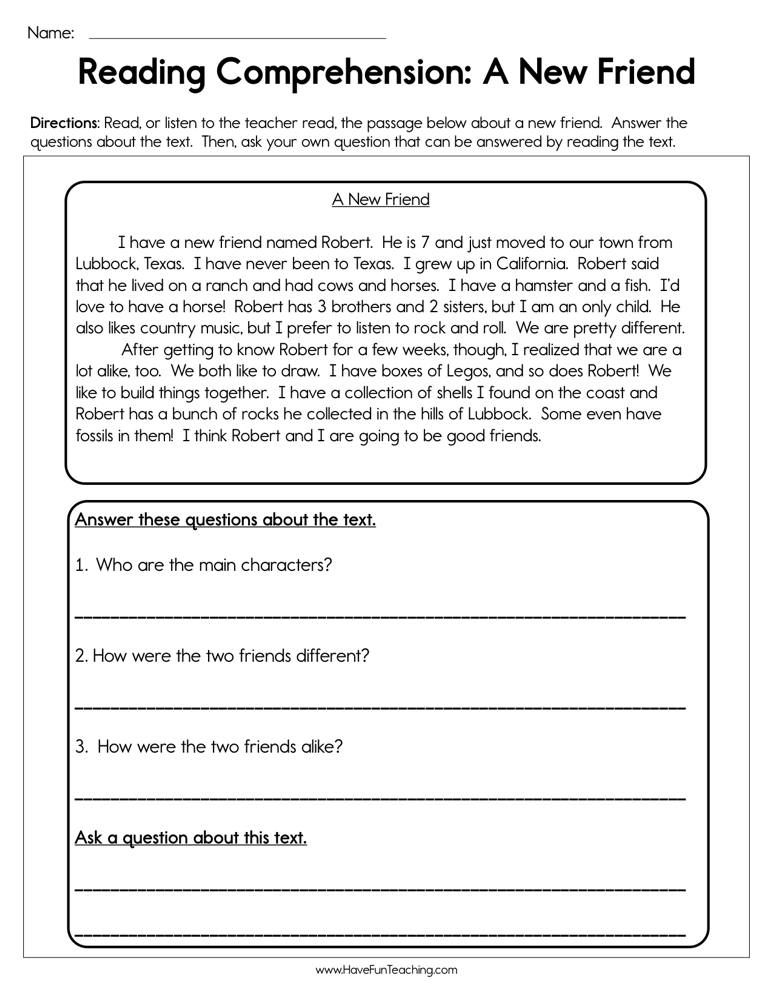 Summing up requires you to decide what is important in the text and then express it in your own words. Summing up allows you to determine if you really understand what you read and remember what you read better in the long run.
Summing up requires you to decide what is important in the text and then express it in your own words. Summing up allows you to determine if you really understand what you read and remember what you read better in the long run.
6. Break your reading into smaller parts
If you are reading a longer or more complex text, consider breaking it up into smaller parts. For example, you can read two paragraphs at a time and then pause to quickly summarize what you just read in your mind. Sharing what you read will help you feel less overwhelmed and give you a better chance of really understanding the information in the text.
7. Keep up the pace
Tempoing yourself is also an effective way to work on your reading comprehension skills, allowing you to set realistic goals for your reading practice and habits. This is especially true for books or other literature that you find difficult. Set yourself a goal that you know you can achieve every day. For example, instead of saying that you want to read the entire book in two days, say that you will read three chapters a night.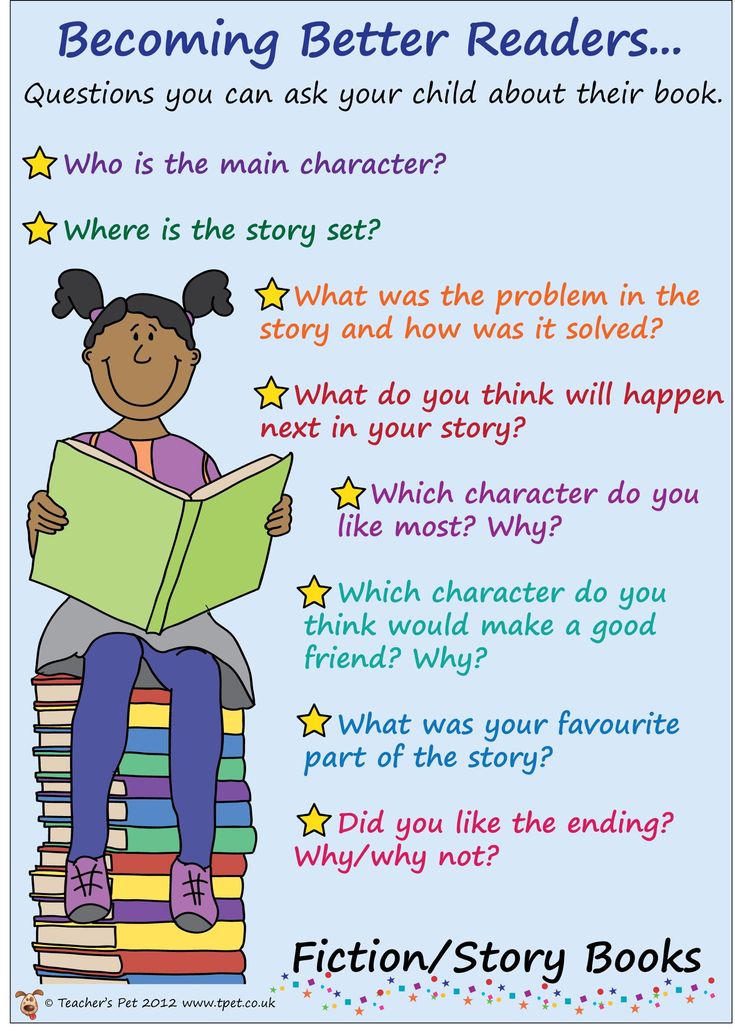 This allows you to achieve your goals and also gives you enough time to process what you read between each session.
This allows you to achieve your goals and also gives you enough time to process what you read between each session.
Tips for getting the most out of your reading comprehension practice
Reading is a fundamental part of everyday life. The more you include and prioritize reading and comprehension of what you read, the better your overall reading comprehension will become. These tips will help you make the most of your time as you practice your reading skills.
Eliminate distractions
When you are distracted, your ability to understand what you read is impaired. When reading—even if it's just an email—eliminate distractions and focus solely on the text. This will help you learn to pay attention to what you are reading and will let you know if you understand what you are reading.
Read a book below your reading level
Starting with books below your reading level, you will be able to develop and build on a basic level of reading comprehension.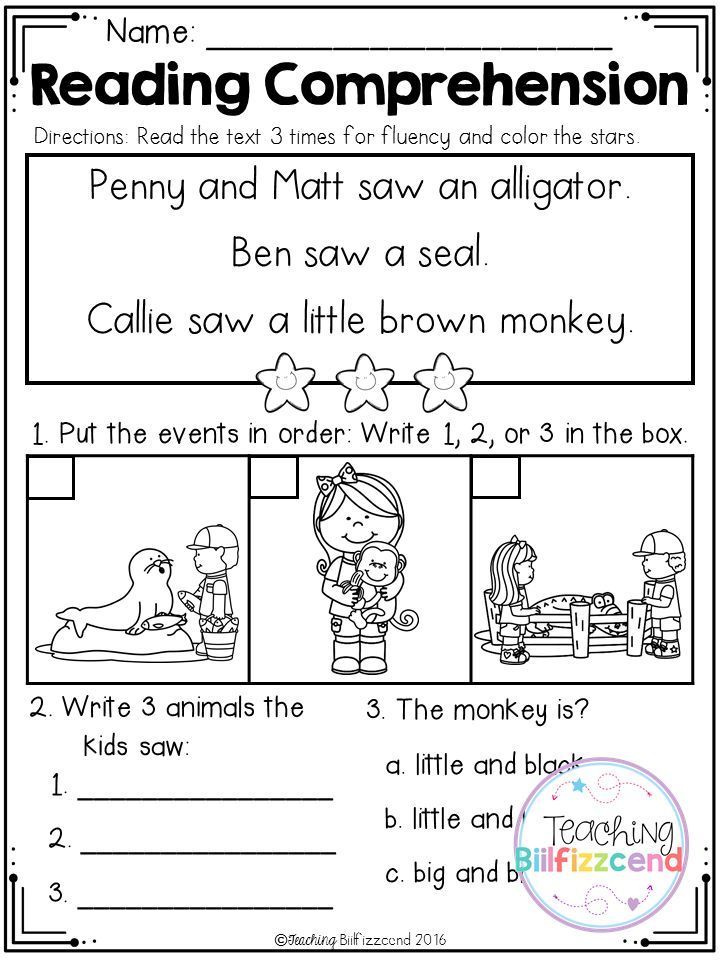 Instead of starting with books or other text that you find difficult, read what is comfortable for you and what you can easily understand. You can take an online test to determine your current reading level.
Instead of starting with books or other text that you find difficult, read what is comfortable for you and what you can easily understand. You can take an online test to determine your current reading level.
Reread the text to make sure you understand it
If you finish a sentence or paragraph and find that you don't understand what it is trying to convey, take the time to reread it until you understand. Try reading more slowly a second time and look up definitions for any words you don't know the meaning of.
Read aloud
Reading aloud incorporates both visual and auditory learning into your reading comprehension practice. It also makes you slow down and gives you more time to process what you are reading.
Reading comprehension strategies | World Scholars Hub
There are best practices and methods to help students make it easier for students to understand the past in English language tests or exams, and this well-researched and informative article on reading comprehension strategies in the World Scholars Hub will help you do just that.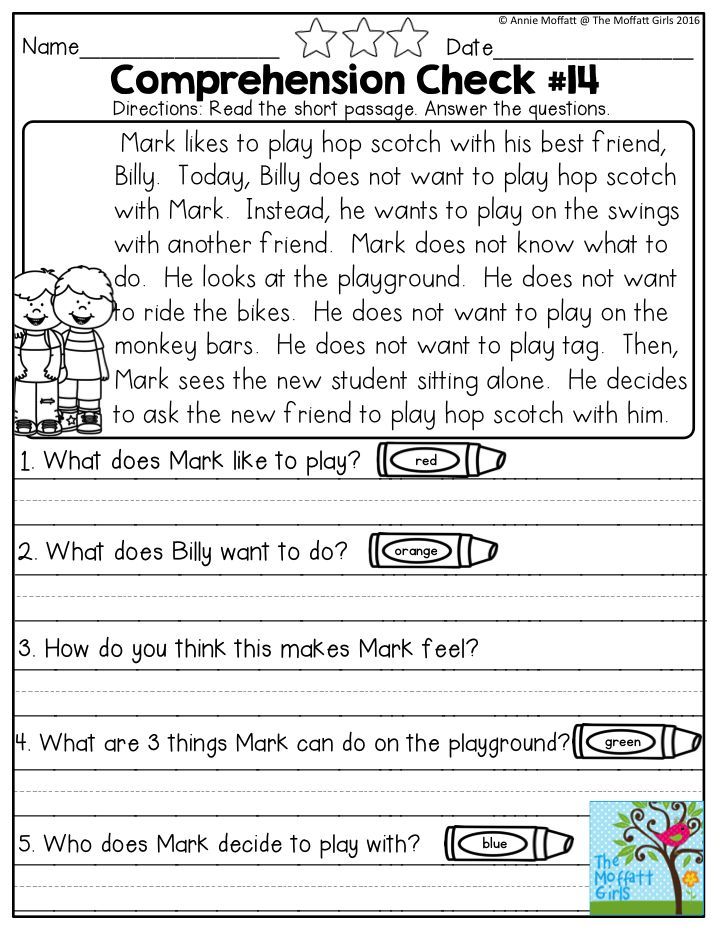
We recommend that every reader of this content carefully and patiently read every line, because every sentence in this article is as important as the next, starting with the principles of reading comprehension, the Specific Method of Passage Comprehension, the characteristics of the correct option in understanding and the characteristics of the intervention option to help you choose the right strategies to help you pass your upcoming test or exam more quickly and comfortably.
This will be a long read, but rest assured this article will be a game changer. Let's jump right into the principles that will lead us to the reading comprehension strategies you need to know as you go deeper into the article.
If you are not sure what writing comprehension is, you can visit Wikipedia for more information on this. Forward.
Contents
1. Principle of reading comprehension
a.) Analysis of the syntactic structure of the cleansing onion
Determine how many main sentences and sub-clauses are contained in the sentence (hereinafter referred to as the onion).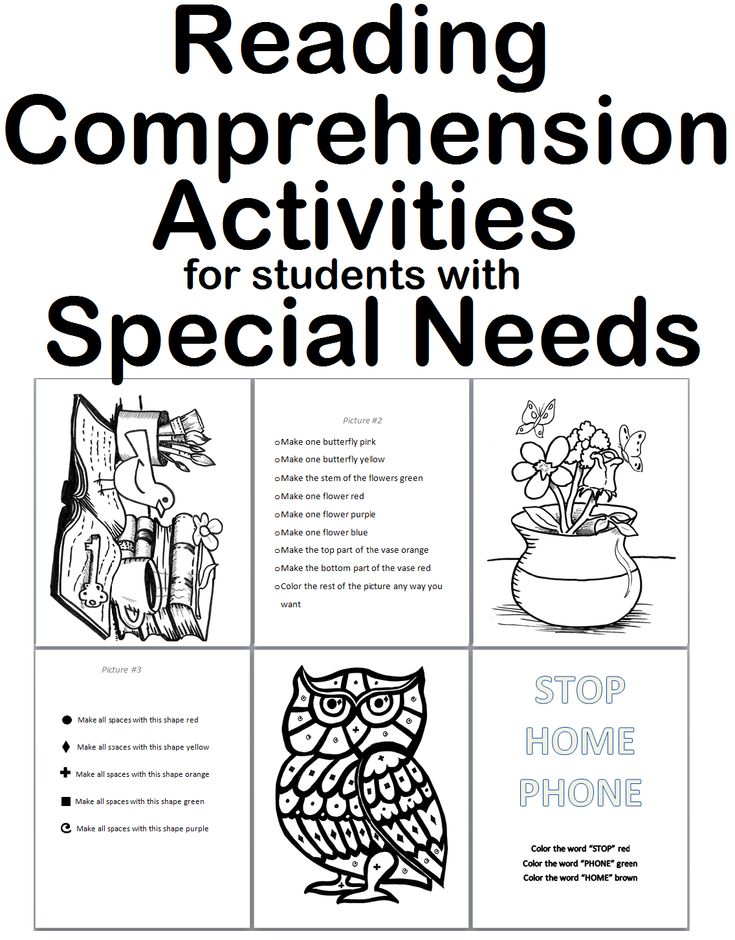
If there is no "and" or "or" in the sentence, and "and" before and after the sentence are placed side by side, then the front and back parts form an onion independently. Peel the skin separately to see if there is a "but" or "still" in the sentence. If there is a but, nevertheless, then the anterior and posterior independently become an onion.
See if there are any special punctuation marks in this sentence: semicolon, colon, dash, and if there are multiple highlighted sentences.
Peel each bulb separately. Starting from the first level, the so-called basic subject-predicate-object structure, each onion forms a grammar, even if it is a skin layer.
Get the value of each layer and use the question method to connect these sentences together to form a complex sentence!
Peel the onion and be careful not to cry.
b.) Evaluation of proposal and subsidiary proposal
When the first sentence of a particular paragraph of the evaluation sentence template, then the supporting sentence is the remaining text of that paragraph.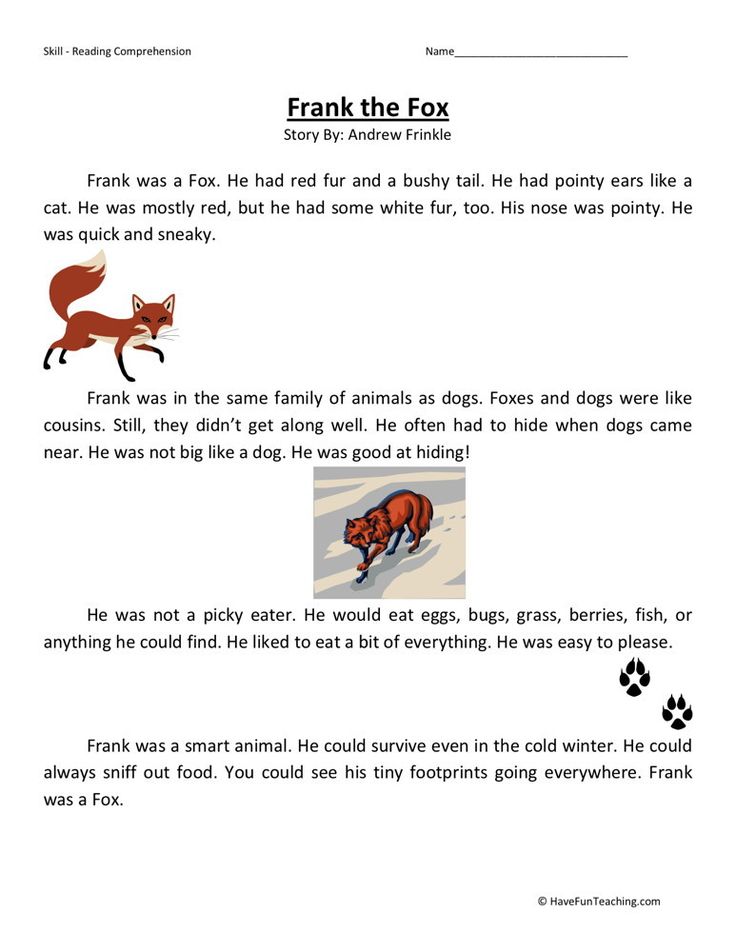
The last sentence, then the auxiliary sentence is the penultimate sentence.
The middle sentence is the sentence before and after this sentence.
c.) The principle of the coordinate axis
is to choose the closest value to the original value. If it's not close, choose the one with the big scope.
It is important to define the zero point: the headword.
Identify the central word:
See if there are names, place names, capital letters, times, data, etc.
see subject, verb and . Compare them one by one and make sure the sentence is correct. not found: the principle of order.
Exceptions to the calculation principle: which of the following is true? Find the central word among the options and compare it one by one. Can't find a few neutral words.
You can read: How to apply for a scholarship.
2. A special method of reading.
Be sure to look at the question first to find out what is being asked and what the question is.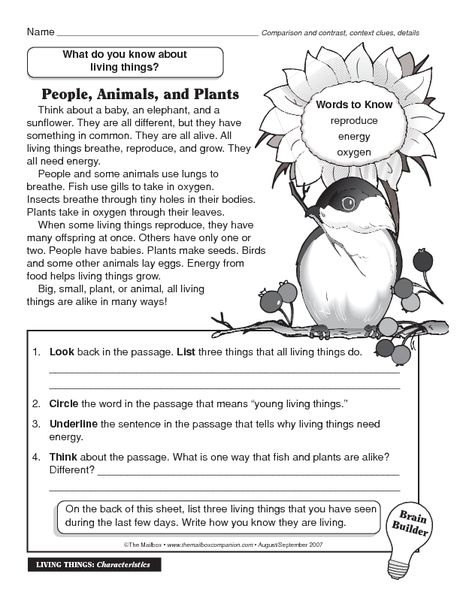 (What are the different types of questions, I will talk about them later)
(What are the different types of questions, I will talk about them later)
If you know what the question is, find the method and steps to solve this type of question (again, I will talk about this later).
Find the corresponding paragraph of the article and find the correct answer in it!
After answering a question, look at the base of the next question and find the answer in the next paragraph. As a rule, one question and one paragraph correspond to each other.
Questions such as "Which one is right at the bottom and which one is wrong" usually fit the paragraph, so it's best to do it at the end!
Be sure to check the article after completion to make sure that the answer you choose matches the main idea of the article.
Avoid those candidates who can get common sense answers without reading the article! So what seems like common sense is definitely wrong!
You can read How to learn quickly and effectively.
3. Characteristics of the right option and characteristics of the intervention option.
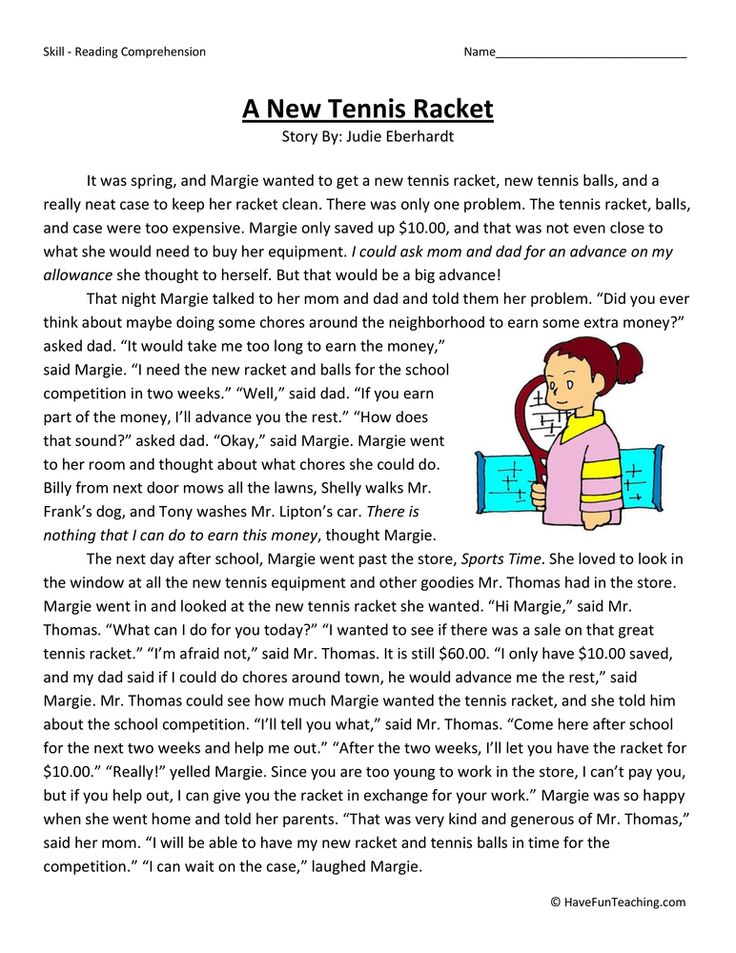
⊗1. Characteristics of the correct version
In fact, the correct version has some characteristics. When choosing an answer, you can pay attention to these characteristics. Even if you don't know these characteristics, you should be more scientific.
Feature 1. The content is often related to the topic of the article.
This is related to the central idea of the article. The correct answers to many articles correspond to the main idea of the article. Therefore, it is worth paying special attention to the options in which the main idea of the article is involved.
Feature 2: position is often at the beginning, end and turning point of the corresponding paragraph.
Needless to say, the beginning, end, and turning points of a paragraph are the main points of the article, as well as places where this topic is often asked. This is worth paying attention to.
Feature 3: when rewriting words, pay attention to synonymous substitutions, mutual or contradictory words in the original text.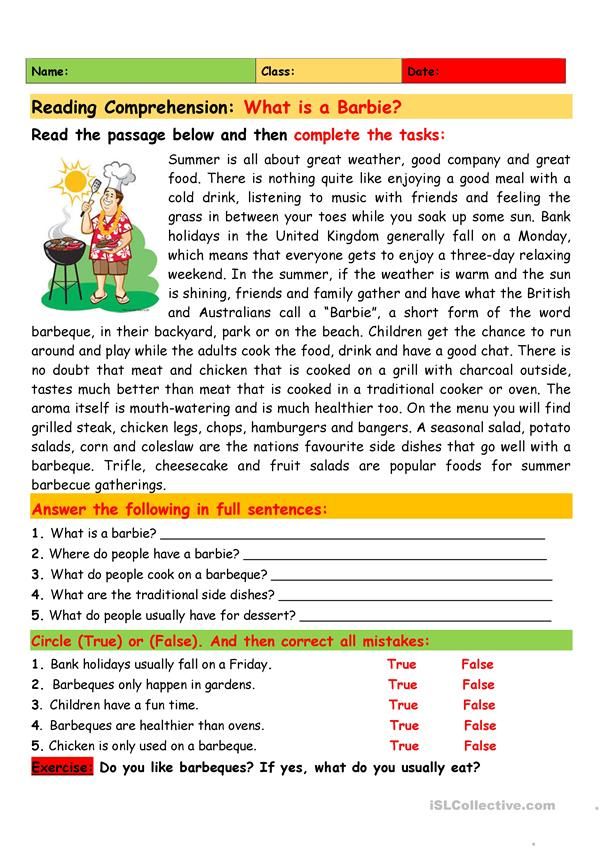
Synonymous substitution, retaliatory remarks, or repeated remarks are the three most common ways of writing responses. Understanding them is tantamount to understanding the problem in terms of propositions.
Feature 4. Tone often contains indefinite and euphemistic particles.
Answers to some questions, especially inference questions, often contain indefinite and euphemistic particles, such as may, to show the relativity of reasoning.
Feature 5: Often general and profound.
Since the purpose of the reading test is the main points and key points of the article, the answers are usually general and in-depth. Therefore, when choosing an answer, beware of options containing too trivial details.
When reading questions, if you can think from the source text and combine the five characteristics of the correct answer above, the result will be perfect.
⊗2. Specifics of Intervention Options
① Seemingly reasonable, but actually taken out of context.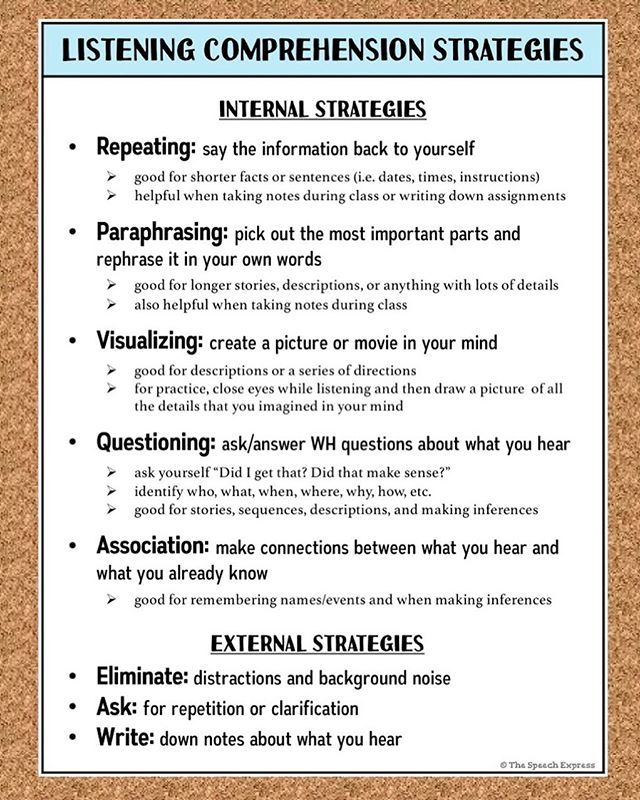
Or make-up options using the common sense of life, not mentioned in the article.
Either take the facts and details in the article as the main thing, and take the one-sided, secondary point of view as the main thing.
Therefore, we must find the basis of the text and find the answer. What seems reasonable is not necessarily the correct answer.
In the main topic, the interference of details should be excluded and the topic of the article should be grasped.
②Stealing beams and changing posts, arrogant and wearable
Either make changes to subtle parts of the original sentence, or intercept words or similar constructions in the article and fabricate them.
Either in the alternatives, the cause is the result, the effect is the cause, and the opinions of others or the opinions opposed by the author are the opinions of the author.
Therefore, we must note that options that are too similar may be incorrect if the degree and length do not match the original text.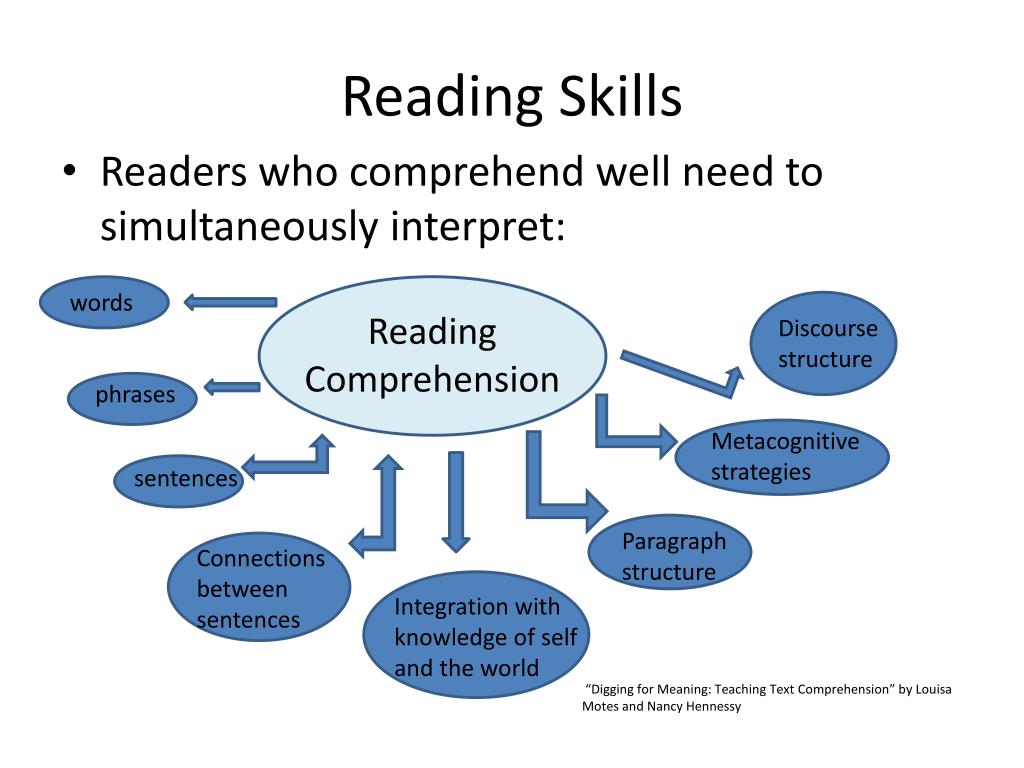
Please note: “The more original texts, the less likely they are to be correct”!
③ Use normal meanings instead of partial meanings of words. In questions concerning the meaning of a sentence and the meaning of a word, the normal meaning of the word or sentence under study is usually considered as the subject of interference.
④ Excessive expansion. Pay attention to whether the options are far beyond the scope of the article, and do not abuse them.
⑤The most confusing option is half right and half wrong.
Common question types and reading comprehension strategiesYou can read 10 online colleges that pay you tuition.
General types of questions and reading comprehension strategies
General types of questions for reading comprehension typically include:
- Thematic questions,
- Detailed questions,
- Suggested questions and
- Word Meaning Questions.
1. Message subject (topic questions)
Features: This type of question often uses words such as title, subject, main idea, subject, subject, etc.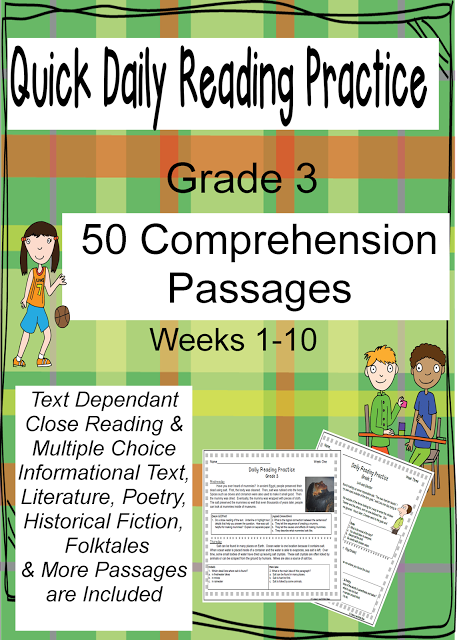 Topic questions are usually divided into inductive heading type and general type of idea. Let's look at two types.
Topic questions are usually divided into inductive heading type and general type of idea. Let's look at two types.
(a) Induction standard type
Features: short and concise, usually more than one phrase; strong lighting, usually covering the meaning of the entire text; high precision, the scope of the expression must be appropriate, and the semantic level or color cannot be changed at will. Common sentence forms:
What is the best title for the text?
The best title for this passage is ___.
Which of the following would be a better title for the passage?
(b) Summarize the general idea
Including finding the topic and main idea of the article.
Common sentence forms:
What is the general/main idea of the passage?
Which of the following expresses the main idea?
What is the text about?
What is the main article about?
problem solving skills
This article is usually a bit more argumentative and explanatory.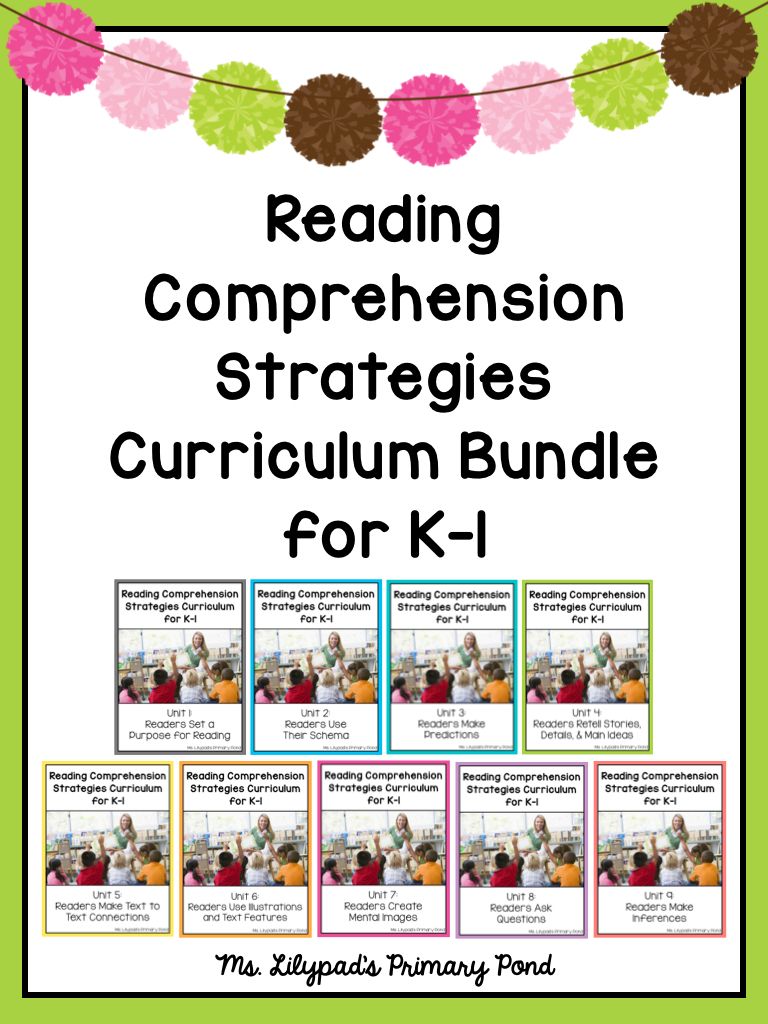 The structure of the article can be summarized as follows: ask questions - discuss problems - draw conclusions or clarify opinions.
The structure of the article can be summarized as follows: ask questions - discuss problems - draw conclusions or clarify opinions.
For this kind of article, you need to catch the topic sentence that usually appears at the beginning or end of the article. The topic sentence has the characteristics of brevity and generality. The position of the topic sentence in the article basically has the following situations.
① At the beginning of a paragraph: Generally speaking, in a deductive article, the topic sentence often appears at the beginning of the article, that is, the topic is stated first, and then a specific statement is made around that topic.
To determine if the first sentence is a topic, you can specifically analyze the relationship between the first sentence of a paragraph and the second and third sentences; If the first sentence is explained, discussed, or described from the second sentence, then the first sentence is the topic of the sentence.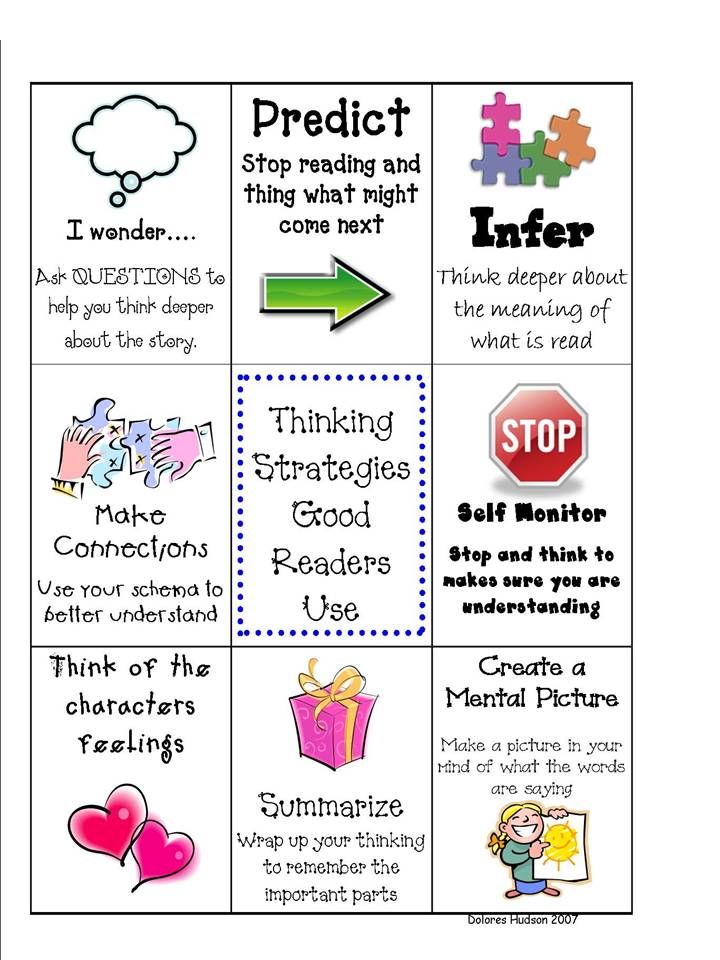
Some paragraphs have signal words that clearly lead to details after the topic sentence, such as example; first, second, next, last, last; to start also, besides; one, the other; one, the other, etc.
While reading, use the above signal words as often as possible to locate the topic sentence.
② At the end of the paragraph: In some articles, the facts are listed first, and then the main argument of the author is argued. So if the first sentence isn't general or exhaustive, it's best to quickly read the last sentence of the paragraph to see if it has the characteristics of a topic sentence.
If it has the characteristics of a topic sentence, the topic idea of the paragraph can be easily identified. Generally speaking, when a point of view is difficult to explain to others or difficult to accept, the topic sentence does not appear until the end of the paragraph.
Students can make full use of signal words that lead to conclusions.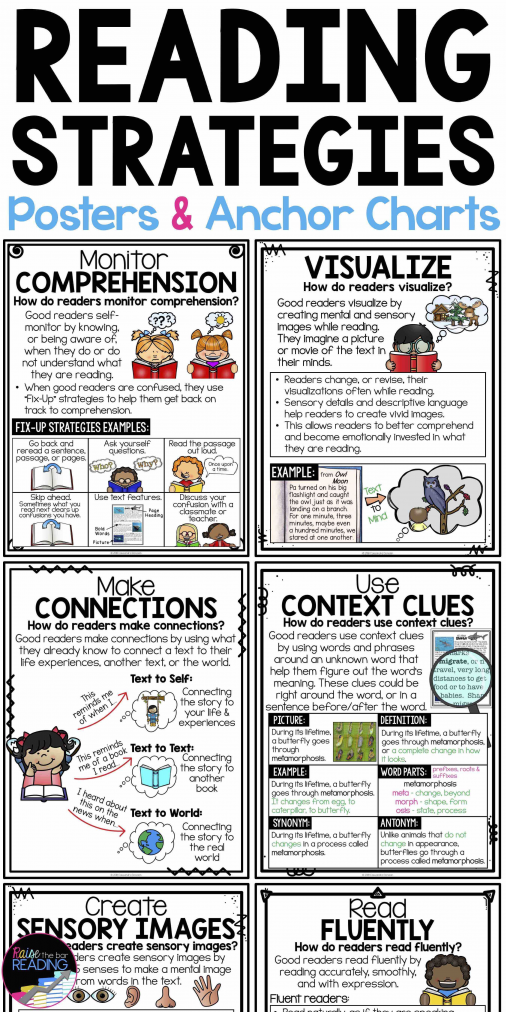 Thus, therefore, thus, therefore; in conclusion, briefly; in a word, sum up, etc., to determine the position of the topic sentence at the end of the paragraph. When there is no obvious signal of this kind, students can add a conclusion signal word before the last sentence of a paragraph to determine if it is a topic sentence.
Thus, therefore, thus, therefore; in conclusion, briefly; in a word, sum up, etc., to determine the position of the topic sentence at the end of the paragraph. When there is no obvious signal of this kind, students can add a conclusion signal word before the last sentence of a paragraph to determine if it is a topic sentence.
③ Found in paragraph: Sometimes a paragraph first introduces background and details, then uses a full or general sentence to summarize the content or examples mentioned earlier, and then develops an in-depth discussion of relevant issues related to the topic.
The topic sentence in such articles often appears in the middle of a paragraph. So there are two basic situations: first ask a question, then give an answer (topic sentence), and finally give an explanation; or first ask a question, then state the main idea (the topic of the sentence), and finally give an explanation.
④ Repetition at the beginning and end: Topic sentences appear at the beginning and end of a paragraph one after the other, forming a pattern of repetition before and after.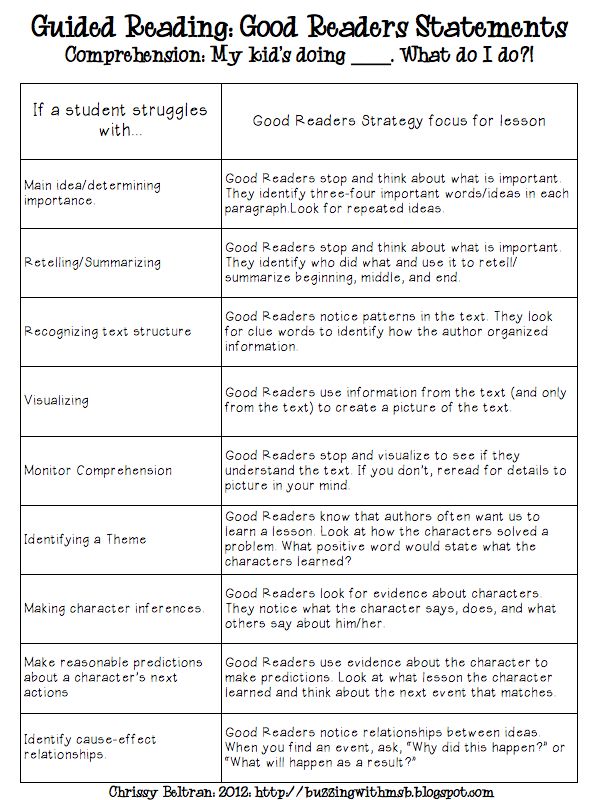
These two topic sentences describe the same content but use different words. Not only does it emphasize the theme, but it also feels flexible and changeable.
These two sentences are not simply repeated. The last topic sentence can be a final commentary on the topic, a summary of the main points, or left to the reader to think about.
⑤ No clear topic sentence: Find keywords (more frequent) and summarize them.
You can find out why studying abroad is considered expensive.
2. Detailed questions
Exam content mainly includes time, place, people, events, causes, results, numbers and other illustrated details and definition details in the argument. A common feature of this type of questions is that the answer can usually be found in the article. Of course, the answer is not necessarily the original sentence in the article.
You need to organize your own sentences to answer the question based on the information provided in the article.
(a) Facts and details questions → reading method
It is divided into questions of direct understanding and indirect questions of understanding. The former are often asked who, what, what, when, where, why, and how, or judging rightly or wrongly; the latter needs to be converted from the original information, and the expression differs from the original. Common sentence forms:
What can we learn from this passage?
All of the following are mentioned except
Which of the following is mentioned (not mentioned)?
Which of the following statements about... is true/true/false/false?
(b) Question sorting → head-to-tail positioning method (find the first event and the last event and use the elimination method to narrow the scope)
He often appears in narrative and explanatory texts, usually in the order of events. Common sentence forms:
Which of the following is the correct order.
..?
Which of the following does the signal path described in paragraph... show?
(c) Picture-Text Matching Questions → sort clues by picture
Question Format: Give a diagram and ask questions based on the diagram.
(d) Questions about numerical calculations → (Method: look through questions → find details using questions → compare, analyze and calculate)
Relevant details can be found directly, but calculations are required to find the answer.
You can read: How to get good grades in school.
3. Justification questions (suggested questions)
Basically it tests everyone's ability to understand the hidden or deep meaning of the article. It requires candidates to make logical inferences based on the content of the article, including the candidate's understanding of the author's point of view, judgment of attitude, and understanding of rhetoric, tone, and implications. Topic keywords: draw a conclusion, point out, imply/suggest, draw a conclusion, suggest.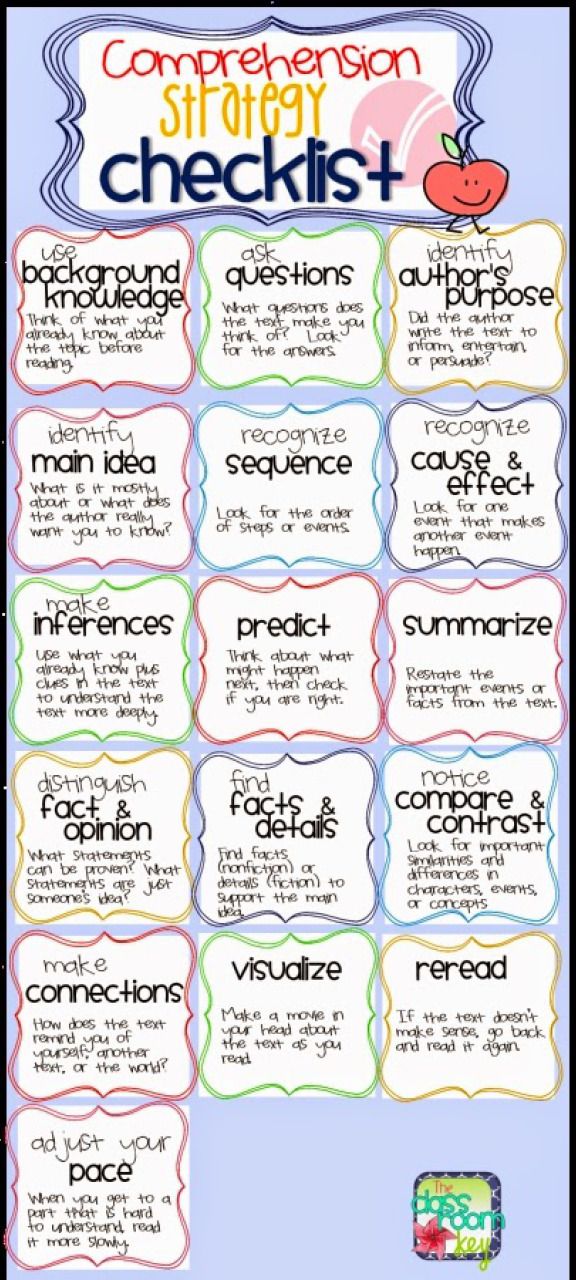
(a) Detailed arguments and judgment questions
As a general rule, you can draw conclusions and judgments based on the information provided in the essay or using common sense. Common sentence forms:
It can be concluded from the text that __________.
The author implies/suggests that _____.
We can conclude that _________.
Which of the following statements is implied but NOT stated?
(b) Questions of forecasting, reasoning and reasoning
Based on the text, guess the next content or possible ending of the article.
Common sentence forms:
What do you think will happen if/when…?
At the end of this passage, the writer may continue to write _____
(c) Infer the article's source or target audience.
Common sentence forms:
The passage is probably from _____
This passage is most likely to be found in _____
Where did this text come from?
(d) Inference questions about writing intent, purpose and attitude
The author's tone and attitude are often not explicitly stated in the article, but can only be understood by the author's choice of words and their modifiers by carefully reading the article.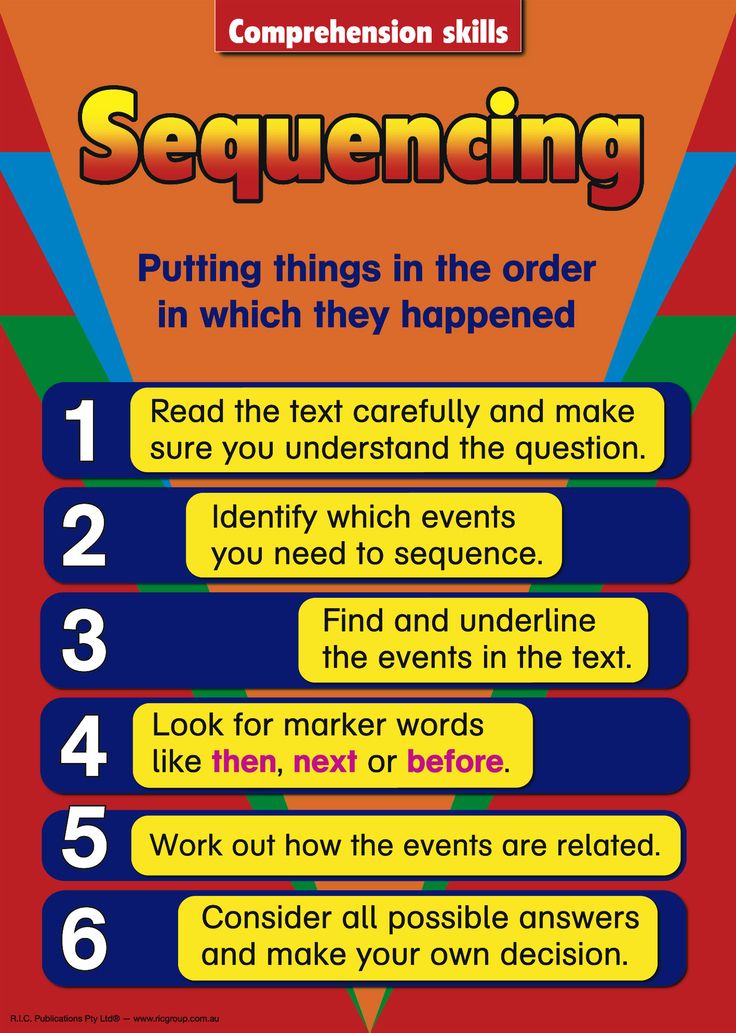
Questions about the purpose of writing, words that often occur in variants:
explain, prove, convince, advise, comment, praise, criticize, entertain, demonstrate, argue, tell, analyze, etc. Questions regarding tone and attitude, words that often appear in the variants: neutral, sympathetic , satisfied, friendly, enthusiastic, subjective, objective, prosaic), pessimistic, optimistic, critical, doubtful, hostile, indifferent, disappointed.
General propositional form
Purpose of the text _____
What is the author's main purpose of writing the text? By mentioning…, the author tries to show that _____
How does the author feel about…?
What does the author think about...?
The tone of the author in this passage is _____. Response Skills
Inference questions are designed to test your ability to analyze, synthesize and induce logical reasoning using textual information on the surface of an article.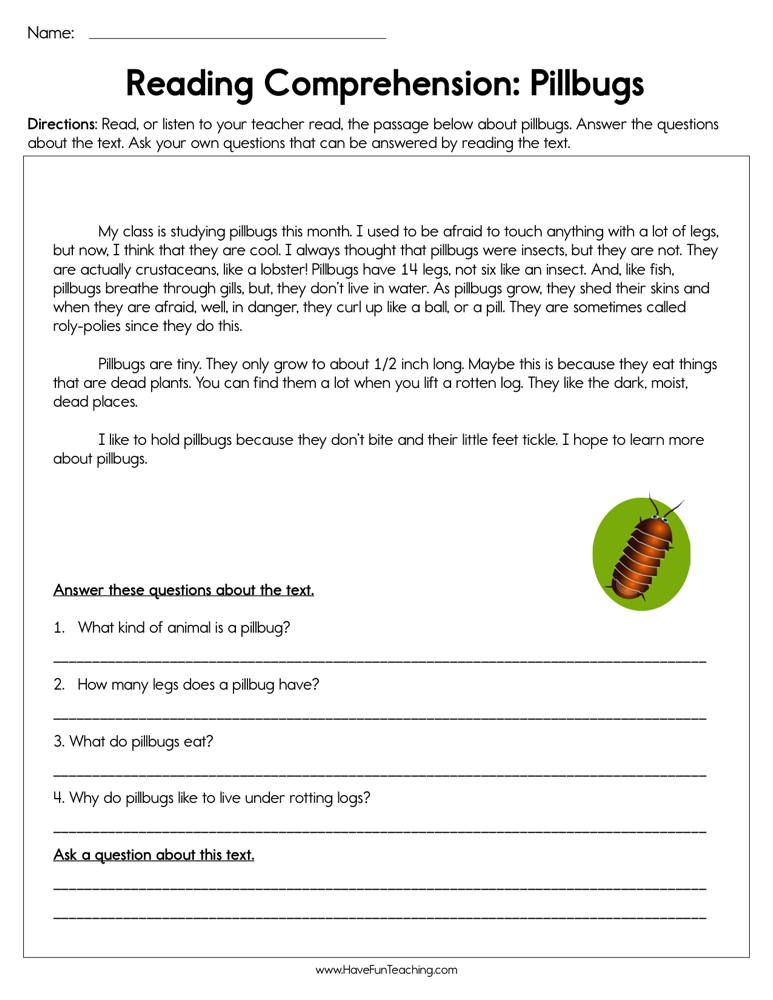 Reasoning and judgment should be based on facts, not subjective judgments.
Reasoning and judgment should be based on facts, not subjective judgments.
①The content listed directly in the article cannot be selected, and the option derived from the article must be selected.
② Reasoning is not guessing from scratch, but inferring the unknown from the known; if the answer is correct, it is necessary to find the basis or reason in the text.
③ Exactly the original text, based on the facts and clues contained in the article. Do not replace the author's ideas with your own opinions; do not share the initial subjective assumptions.
You may want to order Standard College Requirements.
4. Questions about the meaning of words
Test site:
①Guess the meaning of a certain word, phrase, sentence
② Identify an ambiguous word or phrase in the text
③ Assess the referent of a specific pronoun.
Common offer forms:
The underlined word/phrase in the second paragraph means _____.
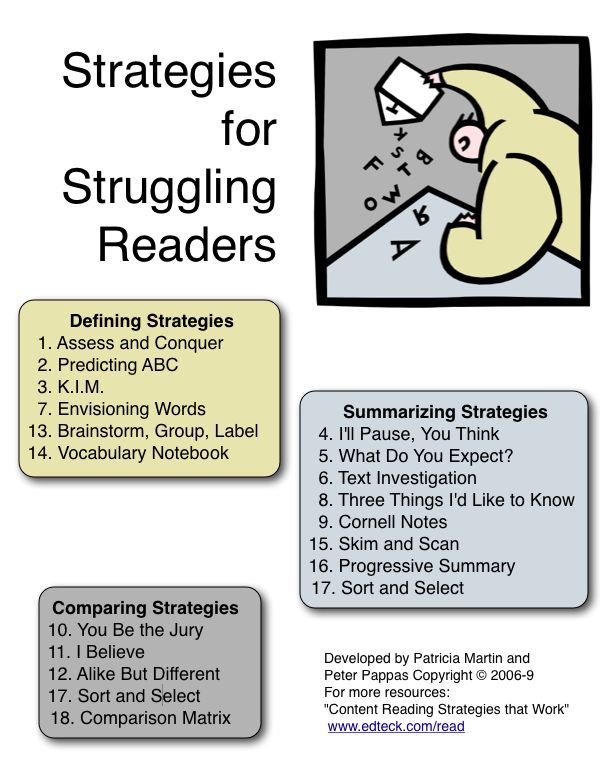
The word “they/they” in the last sentence refers to ______.
The word “…” (Line 6, item 2) probably means ______.
The word “…” (Line 6, item 2) would be best replaced by which of the following?
Which of the following is closest in meaning to the word "..."?
Response skills
(1) Guess the word through causality
The first is to figure out the logical relationship between the new word and the context, and then you can guess the word. Sometimes related words are used in articles (e.g. because, as, since, for, so, thus, as a result, of course, thus, etc.) to express cause and effect.
For example, you shouldn't blame him for this because it wasn't his fault. From the reason expressed in the sentence introduced by for (it is not his fault), one can guess that the meaning of the word guilt is “blame”.
(2) Guess the word by the ratio of synonyms and antonyms.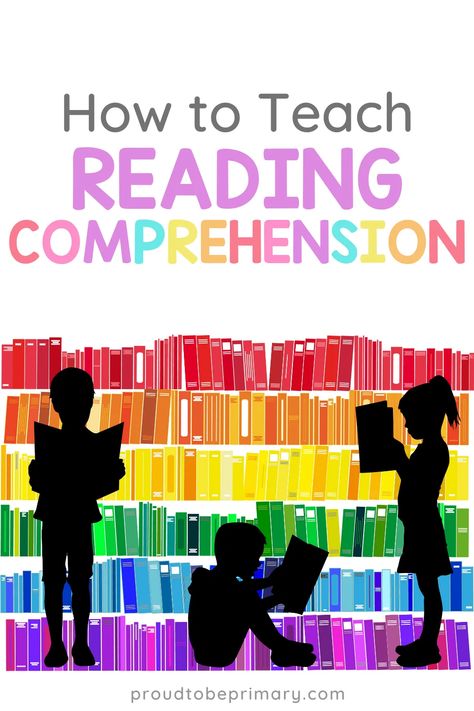
To guess words by synonyms, you need to look at synonymous phrases related to help and or, for example, happy and cheerful. Even if we don't know the word "gay", we may know that it means "happy"; the other is to use it in the process of further explanation. Synonyms such as Man learned something about the planets Venus, Mars and Jupiter with the help of spaceships. In this sentence, Venus (Venus), Mars (Mars) and Jupiter (Jupiter) are all new words, but as long as you know the planets, you can guess that all these words refer to the meaning of "planet".
To guess words by antonyms, you need to look at conjunctions or adverbs that show transition relationships, for example, but, bye, however, etc.; the other is to look at words that do not fit or express a negative meaning, such as He is so unattractive, not at all as handsome as his brother. But not at all ... beautiful, it is not difficult for us to deduce the meaning of nondescript, which means ugly and ugly.
(3) Guess the word construction
she probably stole the money.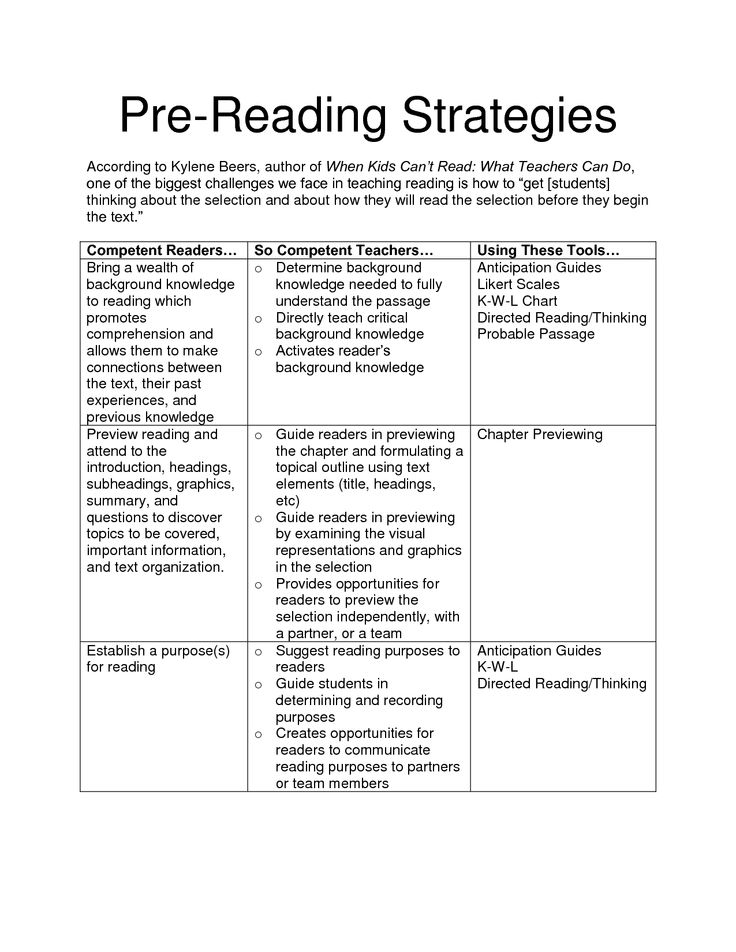 ("un" is negative, so it means "unlikely".)
("un" is negative, so it means "unlikely".)
(4) Infer the meaning of words through definitions or paraphrase relationships.
For example: But sometimes it doesn't rain for a very, very long time. Then comes the dry period or drought.
From the above sentence, where the drought is, we know that it hasn't rained for a long time, so there is a period of drought, that is, a drought. It can be seen that drought means "long drought" and "drought". A dry period and drought are synonymous.
This kind of synonymous or paraphrased relationship is often represented by the expression is, that is, in other words, to be called, or a dash.
(5) Print the meaning of words using syntax functions.
For example, bananas, oranges, pineapples, coconuts and some other fruits grow in warm areas. If pineapples and coconuts are new words, we can judge their approximate meaning by the position of these two words in the sentence.
It is easy to see from the disclaimer that pineapples, coconuts and bananas, oranges are in the same kind of relationship, are in the category of fruits, so these are two kinds of fruits, to be precise, pineapple and coconut.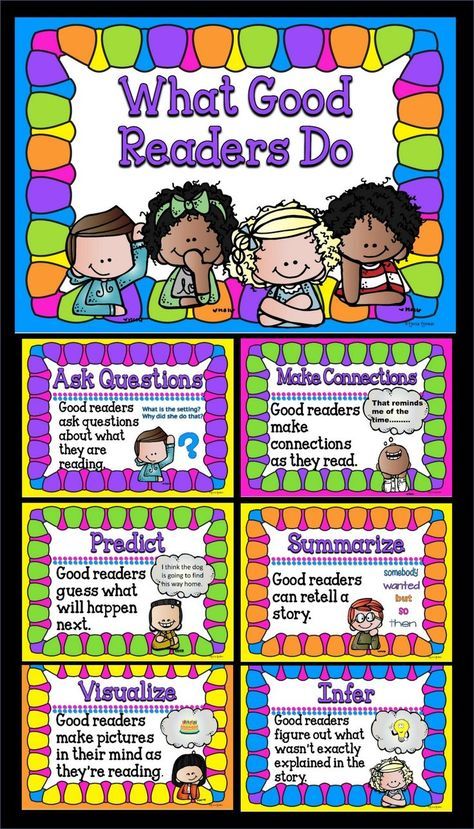

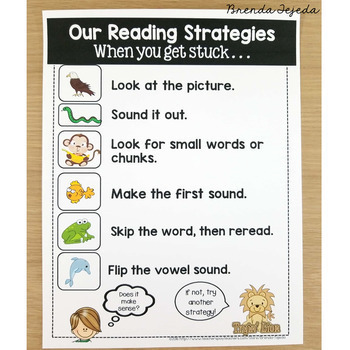 6–8.0)
6–8.0)